A Complete Guide to Planting, Pruning and Caring for a Pear Tree in the UK
A Complete Guide to Planting and Caring for a Pear Tree in the UK

Are you dreaming of a lush garden full of fragrant fruit trees? Why not start your own orchard by planting a pear tree! Pears are perfect for the back yard since they don't take up too much space, and can offer sweet rewards after just a few years. But before you start digging those juicy fruits into salads or deserts, here is what you need to know about planting and caring for your very own pear tree in the UK. Read on to learn what soil types and locations are best as well as tips on pruning, fertilizing, watering and keeping pests at bay!
The Pear Tree, scientifically known as Pyrus communis, is a familiar sight in gardens and orchards around the world. This fruit-bearing tree is versatile and hardy, with an array of different cultivars, each with their own unique flavour and texture. Widely grown throughout temperate regions of the world, the pear tree is also an important crop in many countries, with China, Italy, and the United States being the top producers. Packed with vitamins, minerals, and dietary fibre, pears are a tasty and healthy addition to any diet. Whether enjoyed fresh, baked, or preserved, this fruit has been a favourite for centuries and continues to be a beloved treat for generations to come.
The History of the Pear Tree in the UK
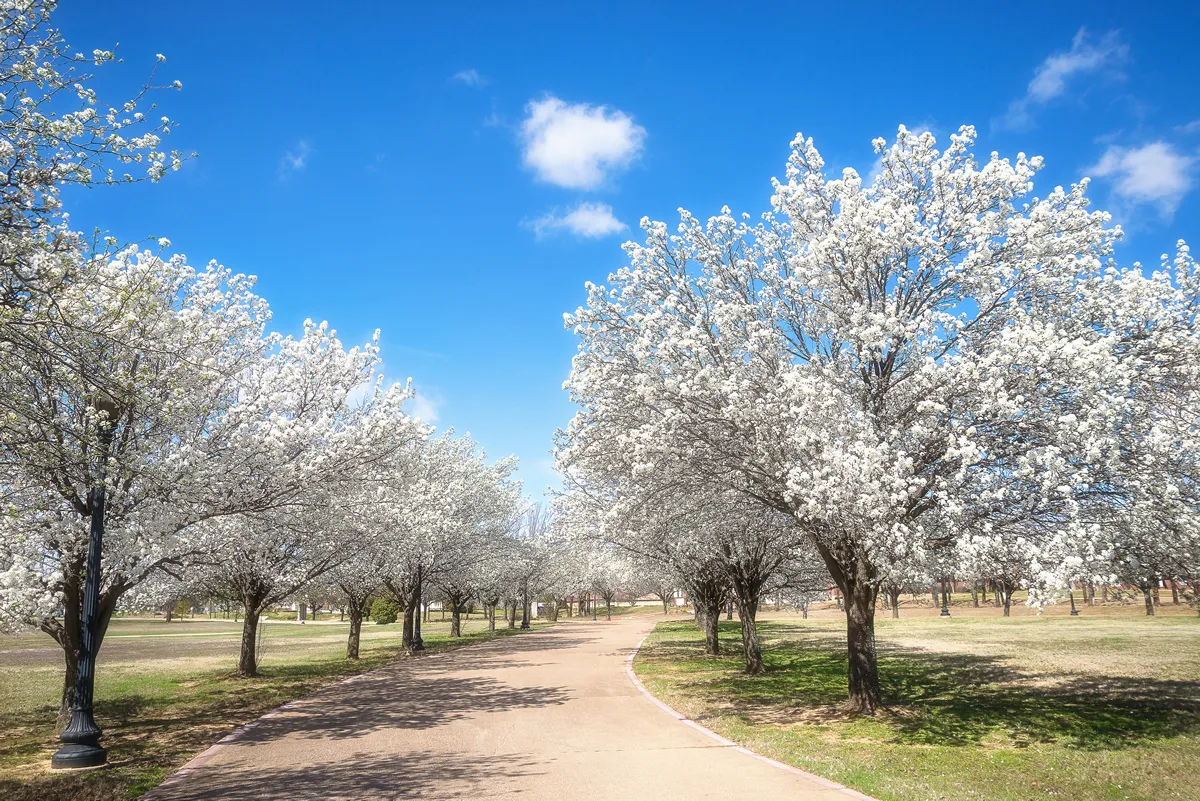
Gardening has long been a beloved pastime in the UK, with many plants and trees finding a special place in the hearts of British gardeners. Among these trees is the pear tree, whose history in the UK stretches back hundreds of years. Originally introduced by the Romans, the pear tree quickly became a popular addition to many British gardens. Over the centuries, various varieties of pear trees were developed and cultivated, each with their own unique flavor and texture. Today, the pear remains a staple of the British gardening landscape, beloved for both its beauty and its delicious fruit. Whether you're an experienced gardener or a newcomer to the hobby, planting a pear tree is a wonderful way to connect with the rich history and traditions of British gardening.
Pear trees have a rich history in the UK, with their roots tracing back to ancient times. The true native wild pear, known as Pyrus pyraster, is one of the rarest trees in British woodland and hedgerows. Pear trees, specifically the variety Pyrus communis, are native to southern, central, and western Europe and they thrive best in light, deep soils within a mild climate. They have been grown in gardens and orchards throughout much of the UK.
One notable tree was the Cubbington Pear Tree, a wild pear tree located near Cubbington in Warwickshire, England. It was around 250 years old and was the second largest wild pear tree in the country. This tree was believed to have been growing near the village of Cubbington for 250 years and may have been the oldest in the UK.
The cultivation of pear trees in Britain was significantly influenced by the Romans. However, it was not until the mid-17th Century that pear breeding gained popularity in the country. Despite the apple being more popular, long-lived pear trees have had a significant presence in England.
In terms of varieties, by 1388, the first culinary pear variety, the Warden, had been introduced by Cistercian Monks at Wardon in Bedfordshire. The Black Worcester is a variety of warden pear. These culinary pears were an important source of vitamin C in medieval England.
In many cultures spanning thousands of years, the fruit of the Pear tree has been symbolized as divine sustenance, abundance, and longevity. The shape of the pear has represented the female form in the art world for centuries, creating a strong symbol of fruitfulness and femininity.
Understanding Variations of Species of Pear Trees ideal for UK Conditions
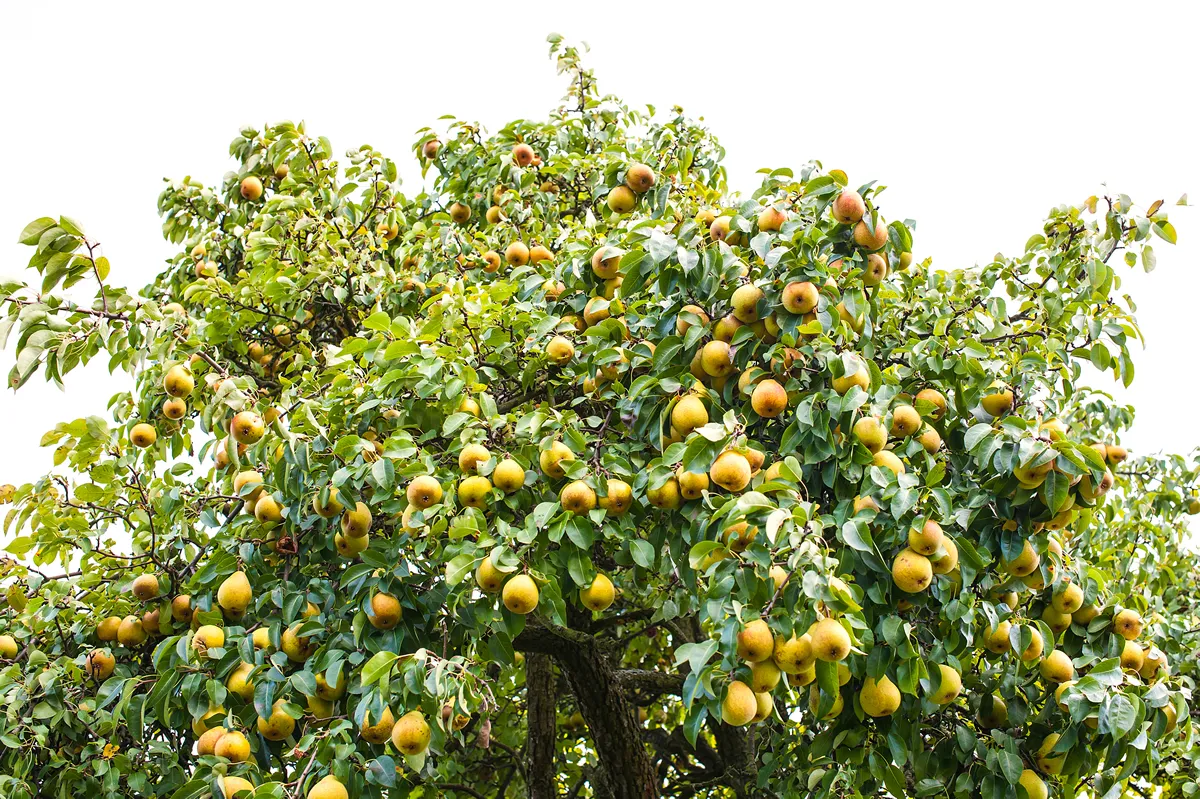
Gardening enthusiasts who want to add pear trees to their orchard may find it challenging to choose the right species for UK conditions. Understanding variations of species of pear trees can help gardeners make an informed decision. While many pear tree species exist, not all are suitable for growing in the UK. Some of the more popular pear tree species include the Conference, Williams, and Concorde varieties. Conference pear trees, for example, are known for their consistent yield and juicy, sweet fruit. On the other hand, Williams pears are ideal for gardeners looking for a softer, more aromatic variety. With a bit of research and careful consideration, gardeners can select the ideal species of pear tree for their UK garden and enjoy the flavor of fresh, homegrown pears.
- Conference Pear: This is the most widely grown pear variety in the UK. The fruit is elongated with a firm and sweet flesh that can be enjoyed fresh or baked. It's a reliable and heavy cropper, mostly harvested around mid-September.
- Williams' Bon Chrétien (Bartlett): Known as Bartlett in Europe, this is another popular pear variety. It produces large yellow or red bell-shaped fruits with buttery, smooth, juicy white flesh. It tends to ripen early, usually in August, and is excellent for eating fresh or canning.
- Comice Pear: This variety is known for its exceptional dessert quality. The fruit is round, with a very juicy and aromatic flesh. It's best harvested in late September and often preferred for its sweet and slightly tangy flavor.
- Concorde Pear: A cross between Conference and Comice varieties, Concorde pears are versatile and can be eaten at any stage of ripeness. They have a sweet, juicy flavour with a hint of vanilla and are usually harvested in mid-October.
- Beurre Hardy Pear: This is a French variety that does well in the UK. It's renowned for its buttery texture and rich, sweet flavor. The fruit is usually ready for harvest in late September.
- Invincible Pear: As the name suggests, this variety is particularly robust. It's a great choice for less ideal conditions as it reliably produces a good crop of sweet and juicy pears. Invincible is usually harvested in late August or early September.
- Winter Nellis Pear: This variety is known for its late season, providing fresh fruit in the winter months. The pears are small, with a somewhat rough skin but offer a sweet and richly flavored flesh.
- Catillac Pear: This is a cooking variety that produces very large fruits. The flesh is quite hard, even when ripe, but turns pink, sweet, and highly flavored when cooked. Catillac Pears are usually harvested in late October.
- Cannock Pear: This variety is known for its resilience in colder and frosty areas. The pears have a classic shape with a sweet and slightly tart flavor, typically harvested in mid-September.
- Kumoi Pear: This Nashi pear variety, originating in Japan, is a bit different - they're the shape of an apple with a crisp bite and a honey-sweet flavour. They are best for storing and usually harvested in late September.
Growing a Pear Tree From Seed
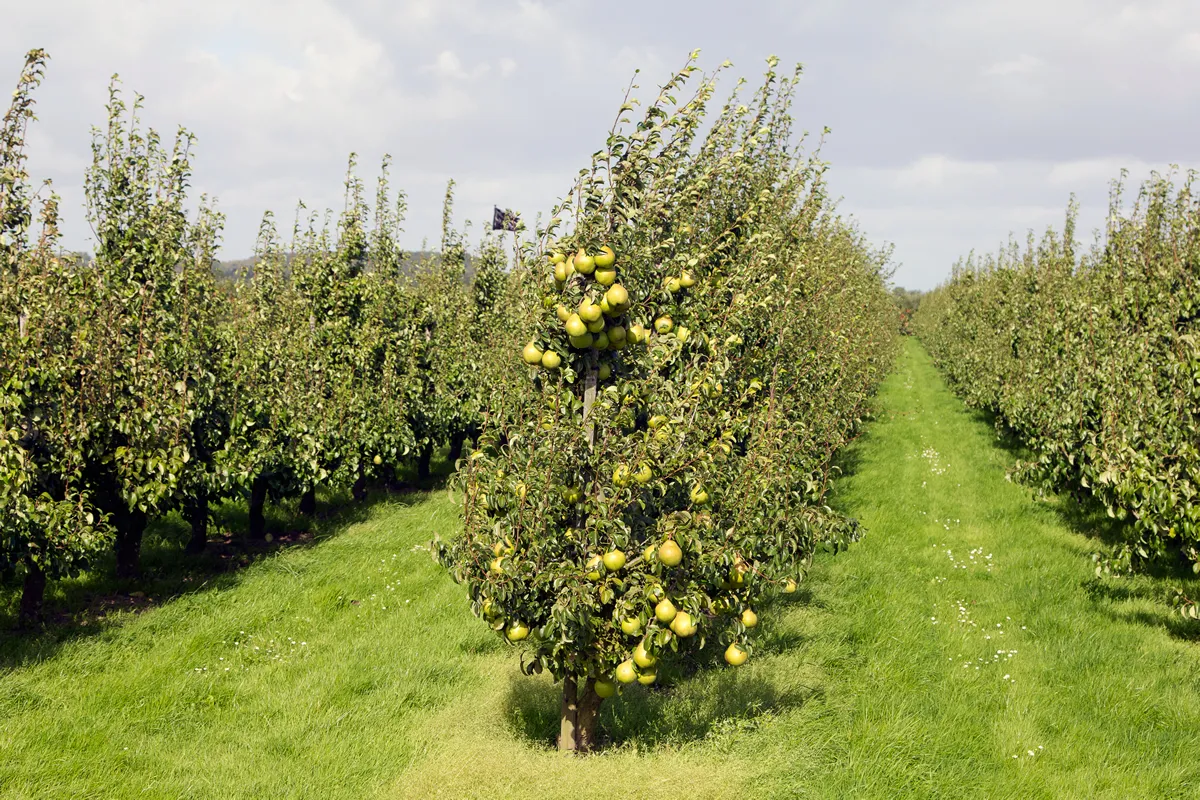
Imagine being able to enjoy fresh, juicy pears straight from your own backyard. Growing a pear tree from seed may seem intimidating at first, but it can be a rewarding and exciting process. First, choose a healthy pear fruit with a visible seed. Remove the seed and soak it in water for 24 hours to help it germinate. Plant the seed in a pot using moist potting soil and place it in a warm, sunny spot. Water the plant regularly and watch as it begins to sprout. With patience and care, your pear tree can grow into a beautiful addition to your garden and provide delicious fruit for years to come.
Growing a pear tree from seed can be a rewarding experience. Here is a step-by-step guide on how to do it:
- Step 1: Collect Seeds First, you'll need to collect seeds from a ripe pear. Cut open the pear, remove the seeds, and rinse them under cool water.
- Step 2: Stratification Pear seeds require a period of cold stratification to germinate. This can be done by wrapping the seeds in a damp paper towel, placing them in a sealed plastic bag, and then storing them in the refrigerator for at least two months.
- Step 3: Planting After the stratification period, plant the seeds in a pot filled with good quality potting soil. The seeds should be planted about 1 inch deep and then covered with soil.
- Step 4: Germination Place the pot in a sunny location and keep the soil moist. Germination usually occurs within a few weeks, but it can sometimes take longer.
- Step 5: Transplanting Once the seedlings have grown to about 1 foot tall, they can be transplanted to their permanent location in the garden. Choose a spot that gets plenty of sunlight and has well-draining soil.
- Step 6: Watering Water the young trees regularly, especially during dry periods. However, be careful not to overwater as this can lead to Root Rot.
- Step 7: Pruning Prune the trees in late winter or early spring to encourage a strong structure. Remove any dead, diseased, or crossing branches.
- Step 8: Fertilizing Apply a balanced fertilizer in the spring to promote healthy growth. Follow the instructions on the fertilizer package for application rates.
- Step 9: Patience Remember, patience is key when growing pear trees from seed. It can take several years before the trees start producing fruit.
Keep in mind that pear trees grown from seed may not produce fruit that is identical to the parent tree due to cross-pollination. If you want a tree that produces a specific type of pear, consider grafting a branch from the desired variety onto a seedling rootstock.
How to Propagate a Pear Tree
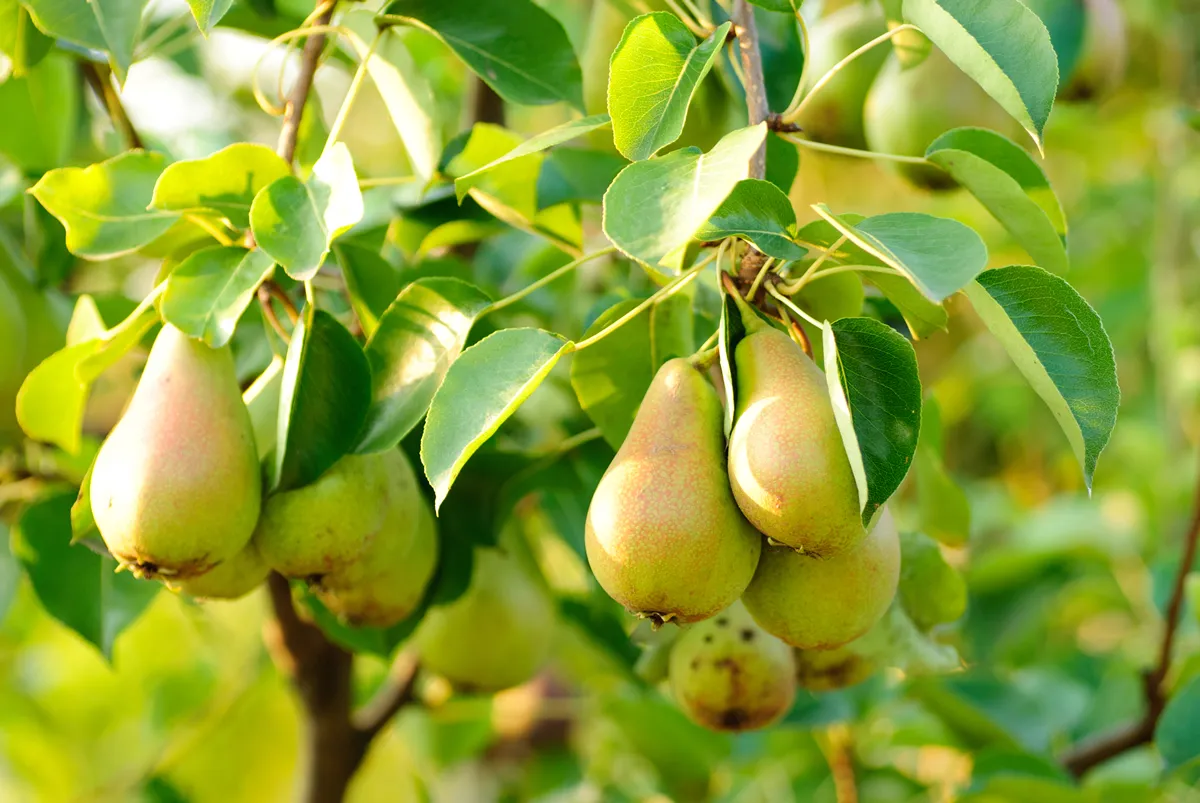
Growing your own fruit can be rewarding, but it can also be a challenge if you don't know where to start. Propagating a pear tree may seem intimidating, but it's not as difficult as you might think. There are a few different methods to choose from, including rooting cuttings, layering, or grafting. Once you have selected your method, it's important to choose a healthy tree to take cuttings from or to layer off of. Proper care must also be taken to ensure the cuttings or layers don't dry out during the propagation process. With a little patience and attention, a new pear tree can be propagated and soon you'll be able to enjoy the delicious taste of freshly grown fruit.
Propagating a Pear Tree Using The Root Cutting Method
Propagating a pear tree using the root cutting method can be an effective way to reproduce the plant. Here's how to do it:
- Step 1: Prepare Your Tools and Materials You'll need a clean, sharp knife or pruning shears, rooting hormone, a pot with drainage holes, and a quality potting mix. Sterilize your cutting tools to avoid transmitting diseases to the plant.
- Step 2: Select a Root Cutting In late winter or early spring, while the tree is still dormant, carefully dig around the base of the pear tree to expose some of the roots. Select a root section that is about 1/4 to 1/2 inch in diameter and cut a piece that is about 4-6 inches long.
- Step 3: Prepare the Cutting Trim off any smaller roots from the cutting and make a straight cut at the top end (the end that was nearest to the trunk) and a slanted cut at the bottom end (the end furthest from the trunk). This will help you remember which end is up.
- Step 4: Apply Rooting Hormone Dip the slanted end of the root cutting into a rooting hormone. This will encourage faster root development.
- Step 5: Plant the Cutting Fill a pot with potting mix and water it thoroughly. Make a hole in the center of the pot deep enough to accommodate the cutting. Place the cutting in the hole with the straight cut end up and firm the soil around it.
- Step 6: Care for the Cutting Place the pot in a location where it will receive indirect light. Keep the soil moist but not soggy. It may take several weeks or even a few months for the cutting to establish roots and begin to show growth.
- Step 7: Transplant the Young Tree Once the cutting has established a good root system and is showing new growth, it can be transplanted to a larger pot or directly into the garden.
Remember, patience is key when propagating plants from cuttings. Not every cutting will take, so don't be discouraged if you need to try a few times before you are successful.
Propagating a Pear Tree Using The Grafting Method
Grafting is a common method used for propagating fruit trees, including pear trees. Here's how to do it:
- Step 1: Prepare Your Tools You'll need a clean, sharp grafting knife, grafting tape, and a grafting sealant. Ensure all your tools are sterilized to prevent the spread of diseases.
- Step 2: Select a Rootstock The rootstock is the lower part of the graft that will provide the root system for your new tree. It should be a healthy, established pear tree, preferably one that's about 1-2 years old and about the same thickness as the scion (the cutting you're grafting).
- Step 3: Select a Scion The scion is the upper part of the graft, taken from the desired pear tree variety. Choose a branch that's about the same diameter as your rootstock and has several buds. Cut a piece about 4-6 inches long.
- Step 4: Make Your Cuts Cut the top of the rootstock off at a slant. On the scion, make a similar slant cut at the bottom. The goal is for these two cuts to match up perfectly, allowing the cambium layers (just under the bark) of both pieces to align.
- Step 5: Join the Scion and Rootstock Fit the scion onto the rootstock, making sure the slanted cuts align, and the cambium layers meet.
- Step 6: Secure the Graft Wrap the graft tightly with grafting tape, starting from the bottom and working your way up. This helps to hold the scion and rootstock together and prevent moisture loss.
- Step 7: Apply Grafting Sealant Apply grafting sealant over the graft area to further lock in moisture and protect the graft from weather and pests.
- Step 8: Aftercare Place the grafted tree in a sheltered spot away from direct sunlight. Keep it well watered. After a few weeks, you should see new growth from the scion. Once the graft has taken, you can remove the grafting tape.
Remember, grafting requires some practice to get right. Don't be discouraged if your first few attempts aren't successful. With time and patience, you can master this useful skill.
Grafting and root cutting are two of the most popular methods for propagating pear trees. These methods may seem intimidating at first, but with some practice you can learn how to successfully propagate a pear tree from seed or cuttings. With proper care and patience, soon you'll be able to enjoy the delicious taste of homegrown pears!
There are several rootstock varieties recommended for grafting pear trees. Here are a few:
- Pyrus calleryana: Often used for its resistance to Fire Blight, this rootstock can also tolerate various soil conditions. It's compatible with most pear varieties.
- Quince: Quince rootstocks, specifically Quince A and Quince C, are commonly used for pear trees. They induce early fruiting and help to control the size of the pear tree. However, they require good soil and drainage.
- OHxF (Old Home x Farmingdale): This series of rootstocks was developed in the USA and includes OHxF 333 and OHxF 97. These rootstocks are disease-resistant and produce trees of varying sizes depending on the specific variety.
- Pyrus communis: Also known as the wild European pear, this is often used for its vigor and compatibility with many pear varieties.
- Pyrus betulifolia: Known for its resistance to pear decline, it's a vigorous rootstock that's suitable for various soil types.
Remember, the choice of rootstock will affect the tree's size, adaptability, resistance to certain diseases, and how soon it will start bearing fruit. So, it's important to choose a rootstock that suits your specific needs and conditions.
Choosing the Right Location to Plant Out your Pear Tree
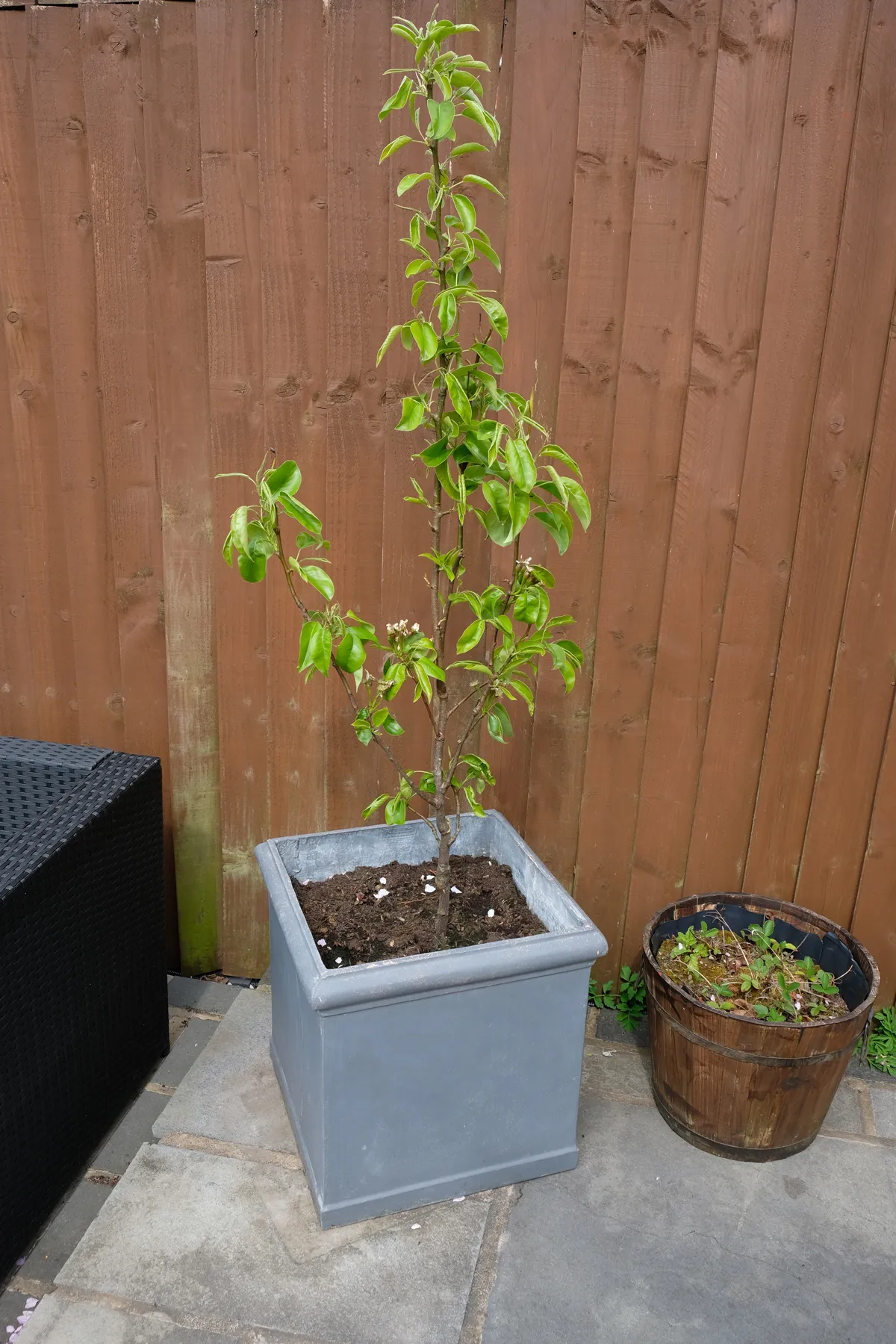
When it comes to planting a fruitful pear tree, choosing the right location is key. You want to make sure your tree is placed in an area of your garden that receives plenty of sunlight throughout the day, as well as sufficient room to grow. Additionally, you'll want to consider the soil quality in your chosen location. Pear trees thrive in soil that is well-draining and nutrient-rich. Do your research and test the pH level of your soil before planting to ensure the best possible conditions for your tree's growth and longevity. By carefully selecting the perfect location, you can look forward to enjoying a bountiful harvest of juicy and delicious pears for years to come.
Choosing the right location to plant your propagated pear tree is crucial for its growth and fruit production. Here are some factors to consider:
- Sunlight: Pear trees need plenty of sunlight to produce high-quality fruit. Choose a location that receives at least six hours of direct sunlight each day.
- Soil: Pear trees prefer well-draining soil. Avoid areas where water tends to pool after rain. The soil should ideally be rich, deep, and loamy, with a pH between 6.0 and 7.0.
- Space: Pear trees need space to grow and spread their branches. Ensure there's enough room for the tree to grow to its full size. Consider the mature height and spread of the tree when spacing. Standard pear trees need about 20 feet of space, while dwarf or semi-dwarf varieties require around 10-15 feet.
- Air Circulation: Good air circulation helps prevent fungal diseases. Don't plant your pear tree too close to buildings or other structures that might block air flow.
- Accessibility: Remember that you'll need to access your tree for pruning, spraying, and harvesting. Make sure it's in a location that you can easily reach.
- Protection: If your area has strong winds, try to choose a location that provides some wind protection. Too much wind can damage the tree and its fruit.
After you've chosen the perfect spot, dig a hole that's twice as wide and just as deep as the root ball of your pear tree. Place the tree in the hole, ensuring that it's not planted deeper than it was in its previous pot. Backfill with soil, water thoroughly, and stake if necessary.
When Do you Plant Out out a Pear Tree?
Planting a pear tree can be a rewarding process as you watch it grow and produce delicious fruit. But, when is the best time to plant it out? Pear trees are generally planted in the late fall to early spring when they are dormant. This allows them to establish roots before the heat of summer. Before planting, make sure the soil is well-drained and enriched with organic matter. Also, choose a sunny spot with plenty of airflow to prevent disease. Taking these considerations into account, planting your pear tree at the right time and in the right location will set it up for success in producing juicy pears for years to come.
Preparing the Soil for Planting a Pear Tree
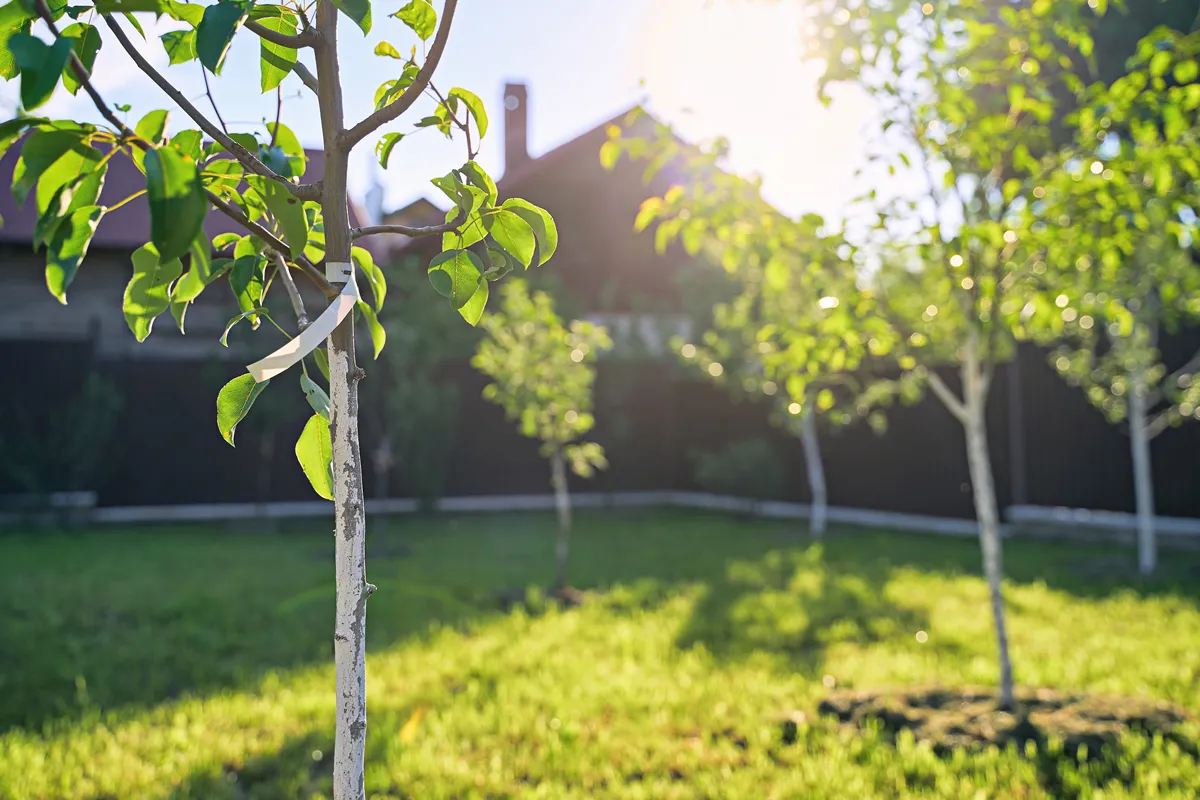
Before planting a pear tree, proper soil preparation is essential to ensure healthy growth and a bountiful harvest. Begin by clearing the planting site of any rocks, weeds, or other debris that could impede root development.
Dig a hole that is approximately twice as wide and deep as the tree's root ball, and loosen the soil at the bottom to promote drainage.
Then, amend the soil with organic matter such as compost or aged manure to improve its structure and nutrient content.
Once the soil is enriched, mix it thoroughly and use it to backfill the hole around the tree's roots. Water the tree deeply and add a layer of mulch around the base, which will help retain moisture and deter weeds. With proper soil preparation, your pear tree will have the strong foundation it needs to thrive for years to come.
A step-by-step Guide on How to Plant a Pear Tree
- Step 1: Choose the Right Time The best time to plant a pear tree is in late winter or early spring. This gives the tree time to establish before the growing season.
- Step 2: Prepare the Planting Site Refer to the previous guide on how to prepare the soil. Make sure the location gets at least six hours of sunlight each day, has well-drained soil, and provides enough space for the pear tree to grow.
- Step 3: Dig the Planting Hole Dig a hole that's twice as wide and just as deep as the root ball. The wide hole loosens the soil around it, making it easier for the roots to spread out.
- Step 4: Place the Tree in the Hole Place your pear tree in the hole. The top of the root ball should be level with or slightly above the surrounding soil surface. This helps prevent water from pooling around the base of the trunk, which can cause rot.
- Step 5: Backfill the Hole Fill in the hole with the same soil you dug out. Do not use compost or soil amendments in the hole. They can discourage the roots from expanding into the native soil.
- Step 6: Water the Tree Water the tree thoroughly after planting to settle the soil and eliminate air pockets. Keep the soil moist but not waterlogged.
- Step 7: Mulch Around the Tree Apply a layer of mulch around the base of the tree, leaving a gap around the trunk. Mulch helps retain soil moisture and suppresses weeds.
- Step 8: Stake the Tree (If Necessary) If your pear tree is tall, or if you live in a windy area, stake the tree for support. Make sure not to damage the roots when driving stakes into the ground.
- Step 9: Care for Your Pear Tree After planting, care for your pear tree by watering regularly, pruning as needed, and fertilizing according to the needs of your specific soil and tree variety.
Remember, the first few years after planting are crucial for your pear tree. Proper care can ensure a strong, healthy tree that produces delicious fruit for many years to come.
Watering Your Pear Tree Regularly
Watering your pear tree regularly is crucial to ensure optimal growth and production of delicious fruit. While pear trees generally require less water than other fruit trees, consistent watering is still necessary to maintain a healthy tree. The frequency of watering depends on the soil moisture and weather conditions but the general guideline is to provide at least 1 inch of water every week. Overwatering your pear tree can lead to Root Rot and decreased fruit production, so make sure the soil is not waterlogged. By establishing a regular watering schedule and monitoring soil moisture levels, you can help your pear tree thrive and yield bountiful harvests year after year.
What is the Best Fertilizer Feed for a Pear Tree and When to Apply it?
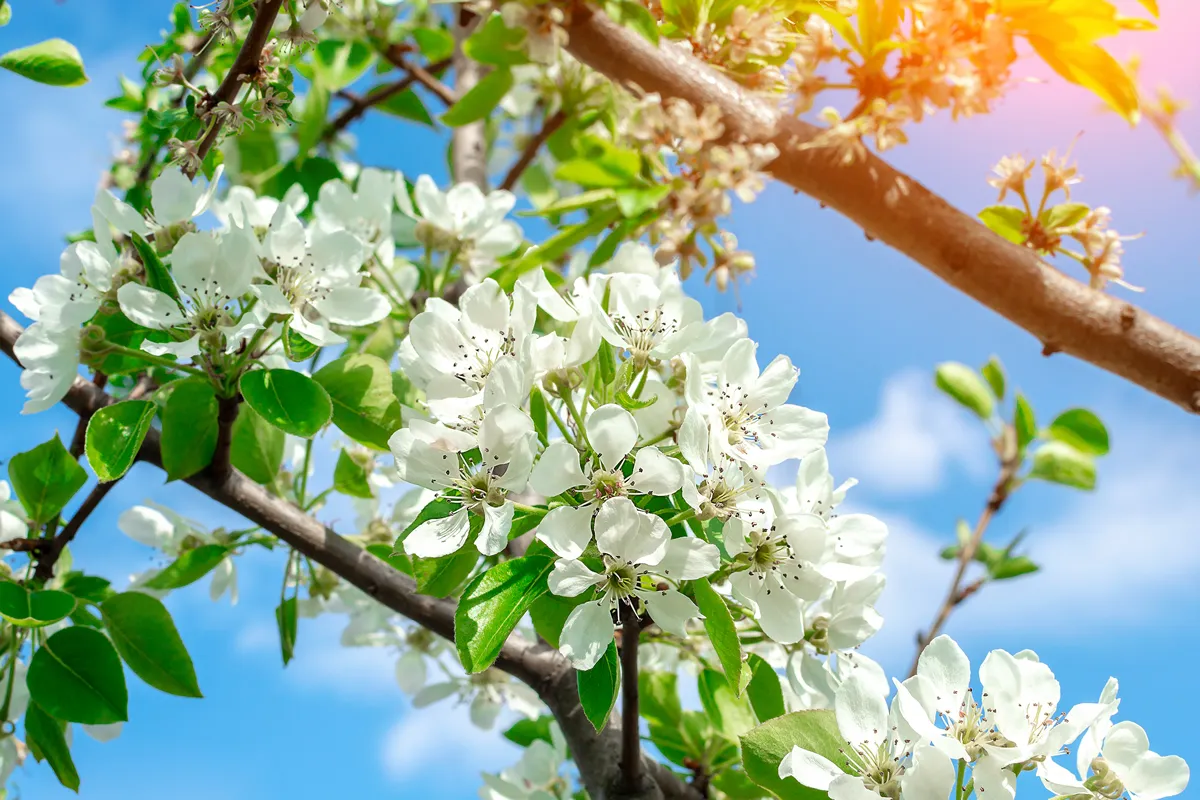
A healthy pear tree requires proper feeding to thrive, and selecting the best fertilizer can make all the difference. To ensure your pear tree gets the right nutrients, it's important to consider the type of fertilizer that suits your tree's needs. Common options include organic and synthetic fertilizers, each with different advantages and disadvantages.
Organic fertilizers, such as manure, contain natural nutrients that can improve soil quality and promote root growth. Synthetic fertilizers, on the other hand, often contain higher concentrations of specific nutrients. Regardless of the type, it's important to select the best fertilizer for your tree based on its individual needs. As for timing, it's generally recommended to fertilize your pear tree in the spring, just as it begins to grow new leaves and again in the early fall. With the right fertilizer and timing, your pear tree can produce bountiful fruit and remain strong and healthy for years to come.
Feeding your pear tree with the right fertilizer can greatly enhance its growth and fruit production. Here are some of the best fertilizers for pear trees:
- Balanced 13-13-13 Fertilizer: This balanced fertilizer provides equal parts of Nitrogen, Phosphorous, and Potassium, which are all essential nutrients for plant growth.
- Composted Manure or Compost: Organic matter like composted manure or compost not only provides nutrients but also improves soil structure and moisture retention.
- Blood Meal: High in nitrogen, blood meal is a great organic fertilizer that can promote vigorous growth.
- Soybean Meal: Another organic option, soybean meal, releases nutrients slowly over time, providing a steady supply of nitrogen.
- Jobe's Organics Fruit Tree Fertilizer Granules: This organic granular fertilizer is specifically formulated for fruit trees, including pear trees.
- 10-10-10 Inorganic Fertilizer: An evenly balanced inorganic fertilizer that provides all the basic nutrients your tree needs.
- Foliar Fertilizers: Foliar fertilizers, such as Boron, Zinc, and Calcium, can be sprayed directly on the leaves for quick absorption.
Remember, before applying any fertilizer, it's a good idea to conduct a soil test to understand what nutrients your soil is lacking. Always follow the manufacturer's directions when applying fertilizers. Over-fertilization can harm your tree and the environment.
When Do Pear Trees start to Produce Fruit?
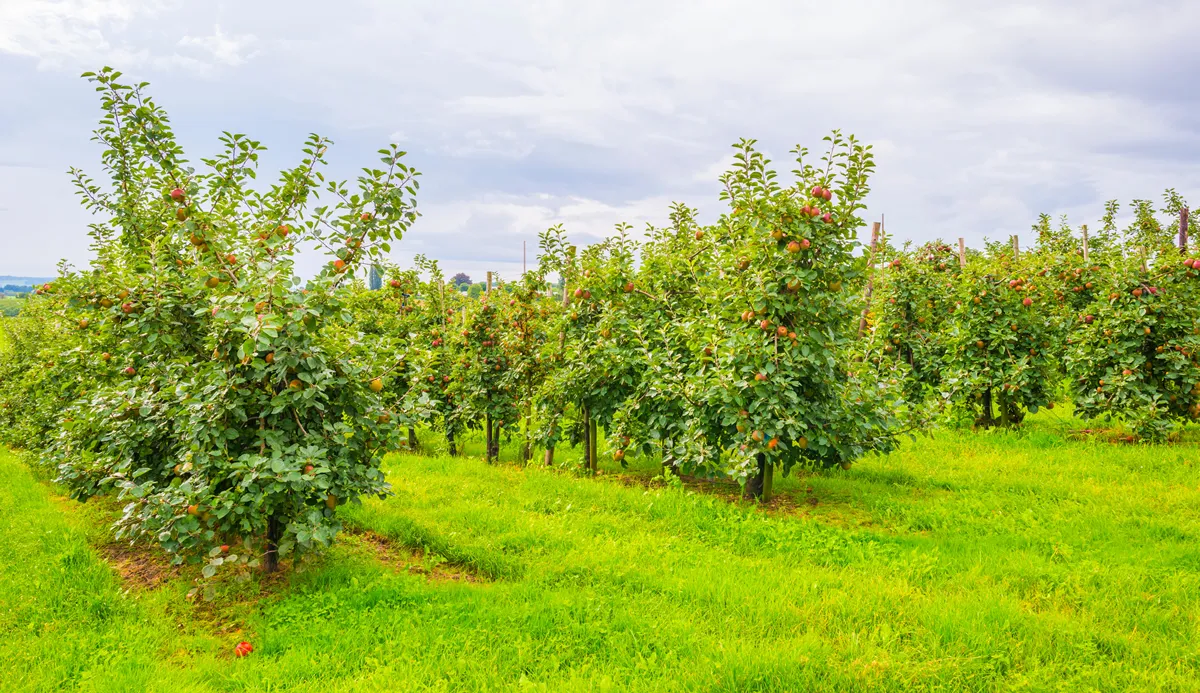
If you have recently planted a pear tree, you might be wondering when it will start to bear fruit. The good news is that pear trees typically start producing fruit about three to five years after they are planted. However, this may vary depending on the type of pear tree and the conditions in which it is growing. Factors such as climate, soil quality, and proper care also play a role in the tree's fruit-bearing process. While you wait for your pear tree to mature and bear fruit, make sure to give it the care and attention it needs to thrive. With the right care and patience, you will soon be enjoying the sweet and juicy fruits of your labour.
How Fast do Pear Trees Grow
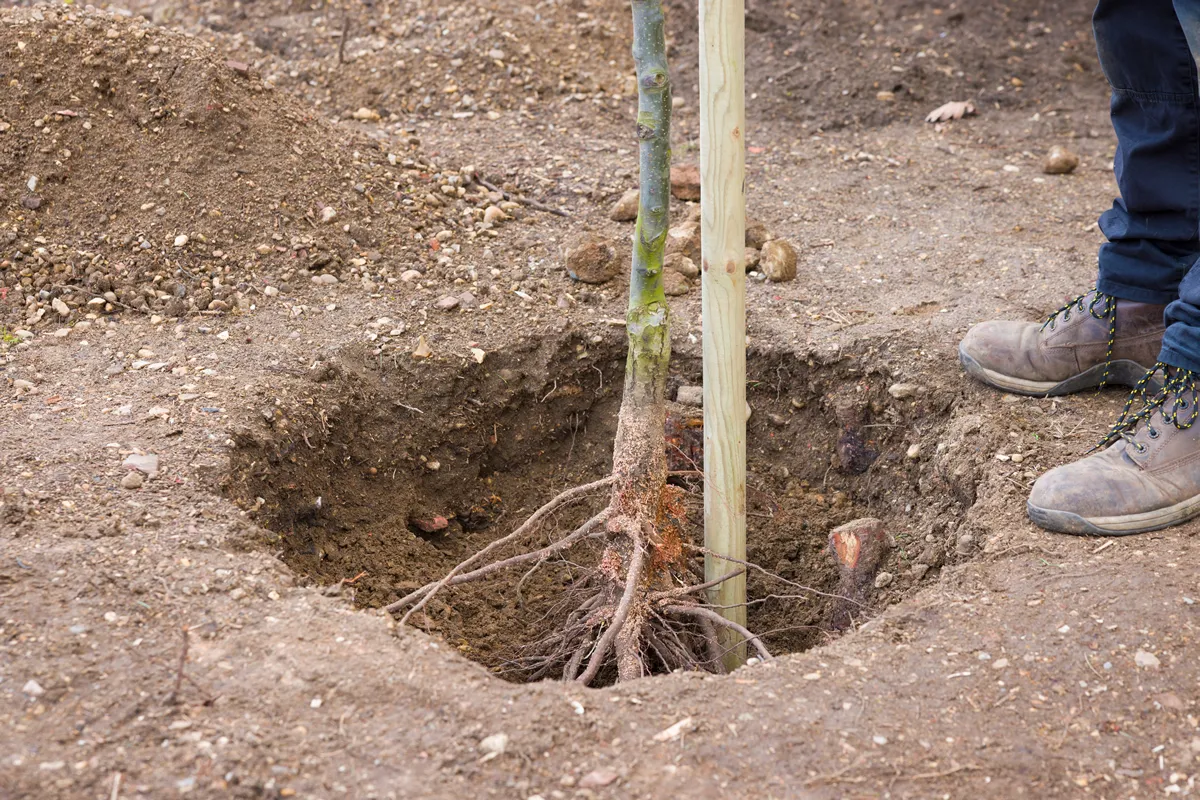
Pear trees are a favourite fruit tree for many gardeners due to the delicious and juicy fruit they produce. As with any fruit tree, it is important to understand the growth patterns of the pear tree in order to care for it properly. The growth rate of pear trees can vary depending on several factors including the variety of tree, climate, soil quality and the amount of sunlight and moisture it receives. On average, pear trees can grow up to 18 inches in a year but they can reach as much as 3-4 feet in a year in certain conditions. While it may take several years for a pear tree to reach maturity and begin bearing fruit, it is a rewarding investment for any gardener looking to add a beautiful and productive tree to their outdoor space.
How do you know When it is the right time to Harvest a Pear Tree?
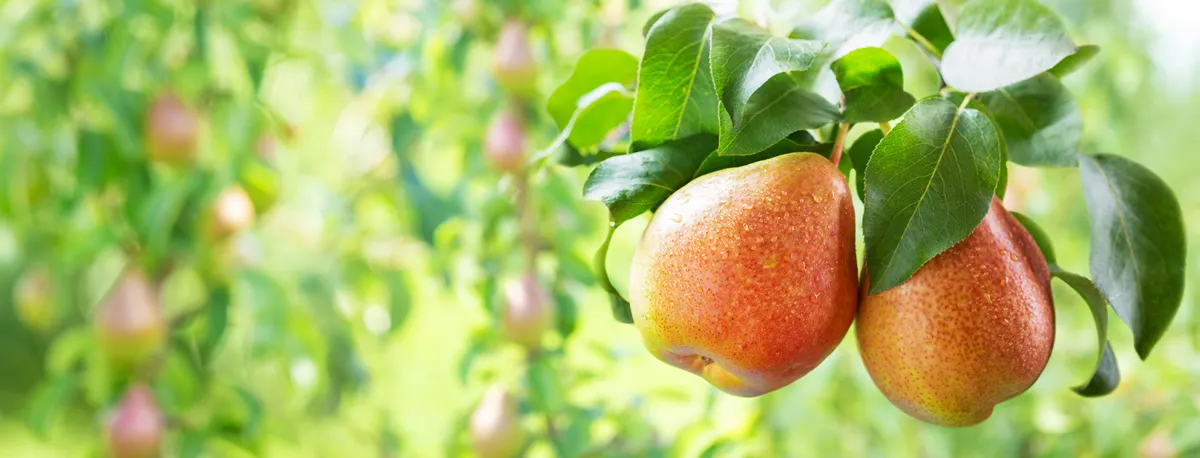
Harvesting a pear tree can be tricky if you don't know how to recognize the right time. The perfect moment to pick your pears depends on several factors such as the variety of the fruit and the climate. Nevertheless, there are some indicators you can follow to ensure that your harvest is on point. Checking the colour and firmness of the fruit is a good start. If the pear skin has a yellowish tint and is soft to the touch, then it's time to harvest.
Additionally, you can carefully twist and turn the fruit. If it comes off the tree easily, then it's ripe enough. Don't wait too long, though, because overripe pears may have a mushy texture and won't taste as good. Trust your instinct, and with a little bit of experience, you'll be able to master the art of harvesting pears.
The Best Preservation methods and storage of your Harvested Pears
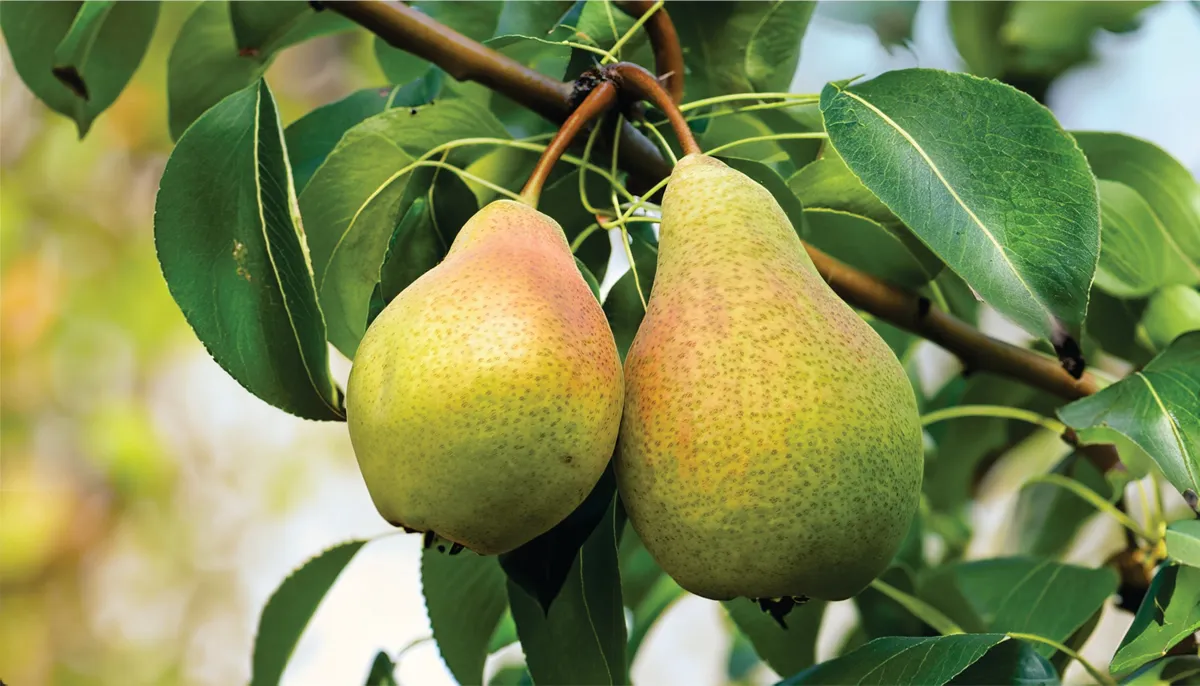
After a successful harvest of delicious pears, the next important step is to preserve and store them properly so that they can be enjoyed for longer. There are a few key methods for preserving pears, including canning, freezing, and drying. Canning involves heating the pears in jars with a mixture of sugar and water, while freezing requires washing and slicing the fruit and placing it in airtight containers in the freezer. Drying pears involves slicing them thinly and either sun-drying them or using a food dehydrator. Whichever preservation method you choose, be sure to store your pears in a cool, dark place with low humidity to prevent spoilage. Properly preserved and stored pears can be used in a variety of recipes, from baked goods to salads, so take the time to preserve your harvest for maximum enjoyment!
The Common Diseases and Pests which Affect the Pear Tree
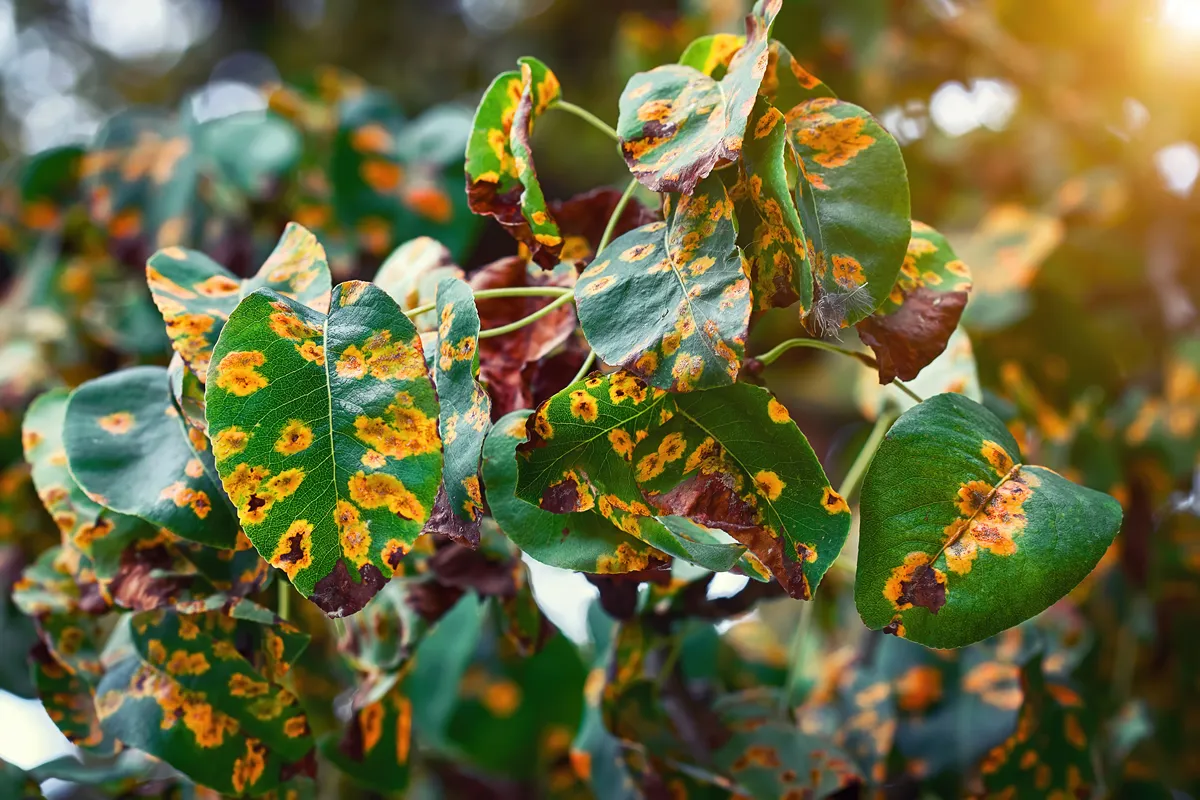 Pear trees fisease, rust spot on leaves. Fruit tree infected with fungus, yellow rust. Fruit plant disease. Pear leaf with Gymnosporangium sabinae infestation. Rust on plants, prevention trees disease
Pear trees fisease, rust spot on leaves. Fruit tree infected with fungus, yellow rust. Fruit plant disease. Pear leaf with Gymnosporangium sabinae infestation. Rust on plants, prevention trees disease
The pear tree is a beautiful addition to any garden, but like any plant, it is susceptible to diseases and pests. As a pear tree owner, it's essential to be aware of the common threats and how to identify them. One of the most common diseases that affect pear trees is Fire Blight, which is caused by bacteria and can cause damage to the tree's foliage, fruit, and bark. Another common problem is Pear Rust, a fungus that typically affects leaves in late summer. When it comes to pests, the most concerning is the Pear Psylla, a tiny insect that feeds on the leaves and fruit of the tree. By taking the time to learn about these threats, you can be well-prepared to protect your beloved pear tree and keep it thriving for years to come.
Pear trees can be affected by a variety of diseases and pests. Here are some common ones:
Diseases:
- Fire Blight: This bacterial disease causes wilting, blackening, and a burnt appearance. Prevention includes pruning infected branches and applying antibacterial sprays.
- Pear Scab: Causes dark, scaly lesions on leaves, fruit, and twigs. Prevent by raking and disposing of fallen leaves, and control with fungicide sprays.
- Fabraea Leaf Spot: Causes dark spots on leaves, which can lead to defoliation. Control with regular fungicide applications.
- Sooty Blotch: Causes dark, sooty patches on the fruit's skin. It can be controlled with fungicides and by pruning to improve air circulation.
- Pear Rust: Causes bright orange spots on leaves. Control methods include removing affected leaves and applying fungicides.
Pests:
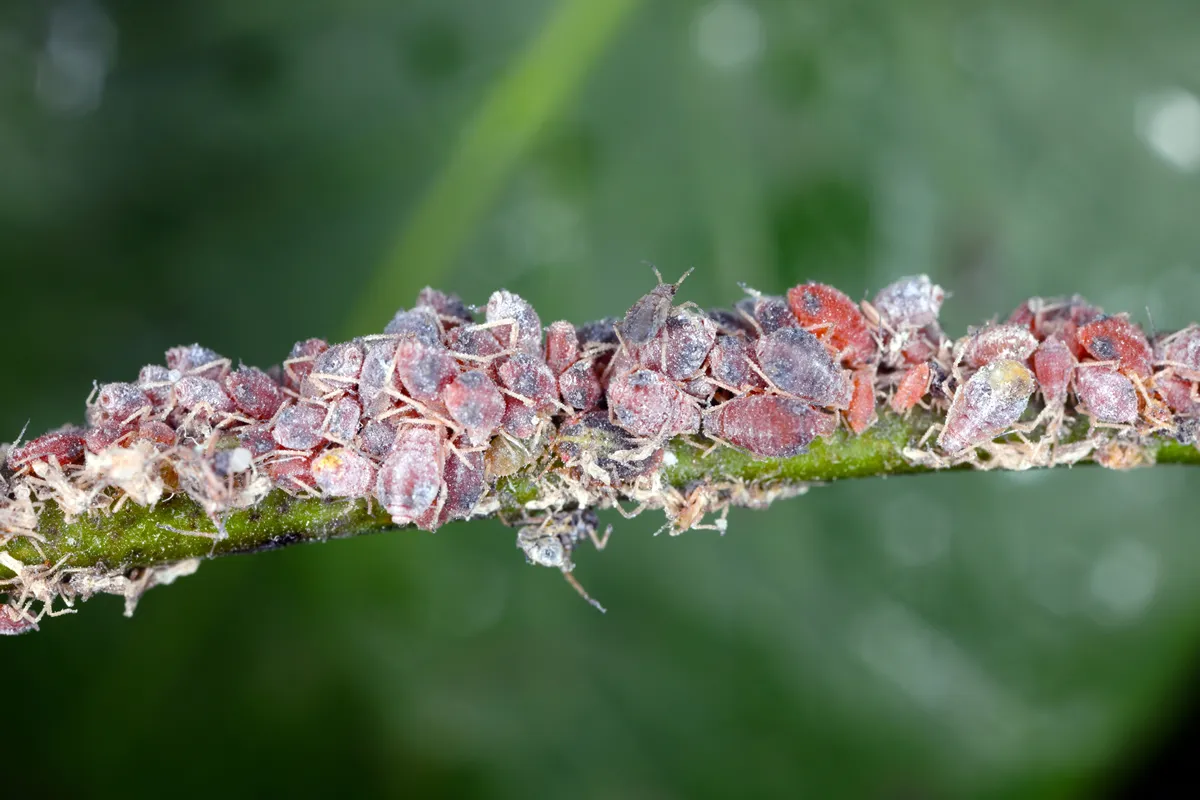 Pear-grass aphid (Melanaphis pyraria, synonym is Pyraphis pyrastri). A colony on a young pear tree shoot in the garden in spring.
Pear-grass aphid (Melanaphis pyraria, synonym is Pyraphis pyrastri). A colony on a young pear tree shoot in the garden in spring.
- Codling Moth: Larvae bore into the fruit, causing damage. Use pheromone traps for monitoring and apply appropriate insecticides.
- Pear Psylla: These tiny insects cause leaves to curl and secrete a sticky substance leading to sooty mold. Control with horticultural oil or insecticidal soap.
- Leafrollers: Caterpillars roll leaves together to form a shelter. Handpick or use insecticides.
- Pear Midges: Larvae cause the fruit to become misshapen and drop early. Dispose of affected fruit and consider using nematodes for control.
- Aphids: Small insects that suck sap and can cause leaf curling and stunted growth. They can be controlled with insecticidal soap or beneficial insects like ladybugs.
Remember, the best defense against diseases and pests is a healthy tree. Regular watering, feeding, and pruning can go a long way in preventing problems. Always identify the specific issue before treating to ensure you're using the most effective method.
A Complete Guide to Pruning a Pear Tree in the UK
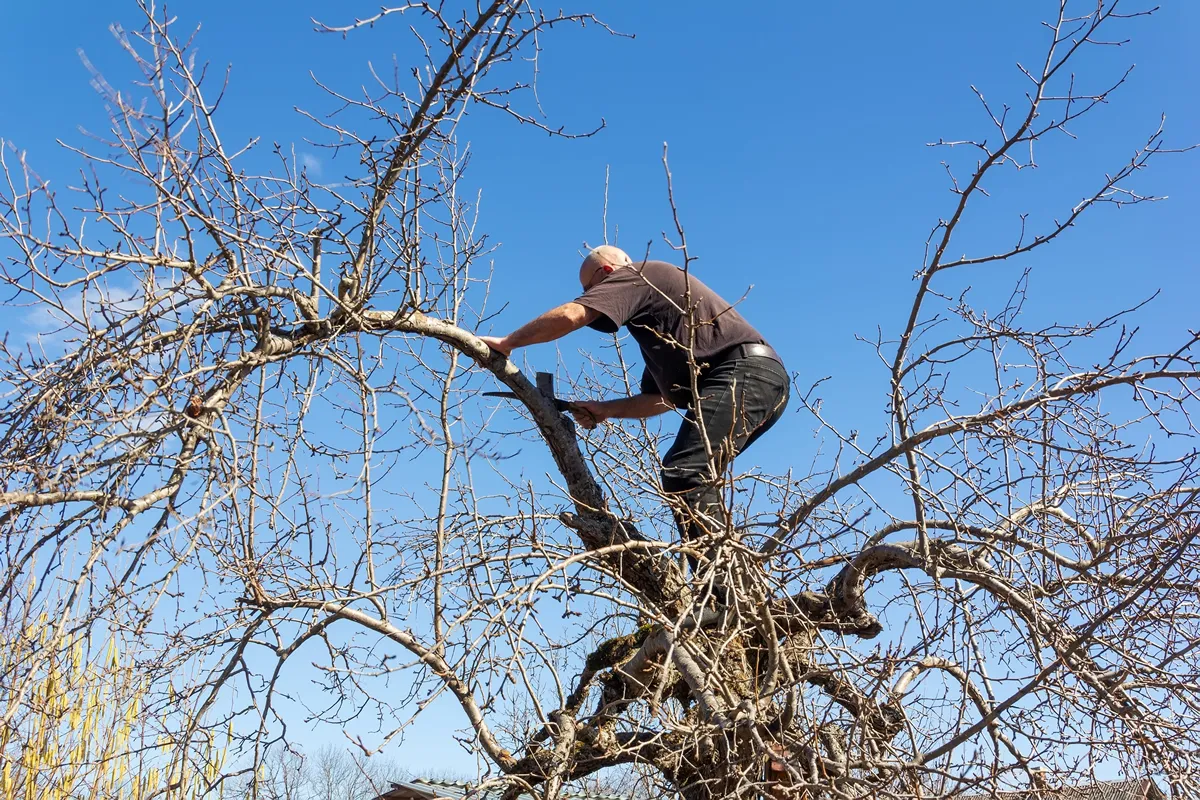
Pruning a pear tree can seem like a daunting task, but with a little knowledge and the right tools, you can keep your tree healthy and productive. In the UK, it's important to prune your pear tree during the dormant season (November to March) to encourage new growth and improve the quality of fruit. First, identify any dead, damaged or diseased branches and remove them with clean, sharp pruning shears. Then, focus on thinning out crowded branches to allow for better sunlight and air circulation. Don't forget to shape your tree by cutting back any overly long shoots or branches that are growing in the wrong direction. With proper care and attention, your pear tree will be ready to produce a bountiful harvest in no time!
Why Do we Need to Prune a Pear Tree?
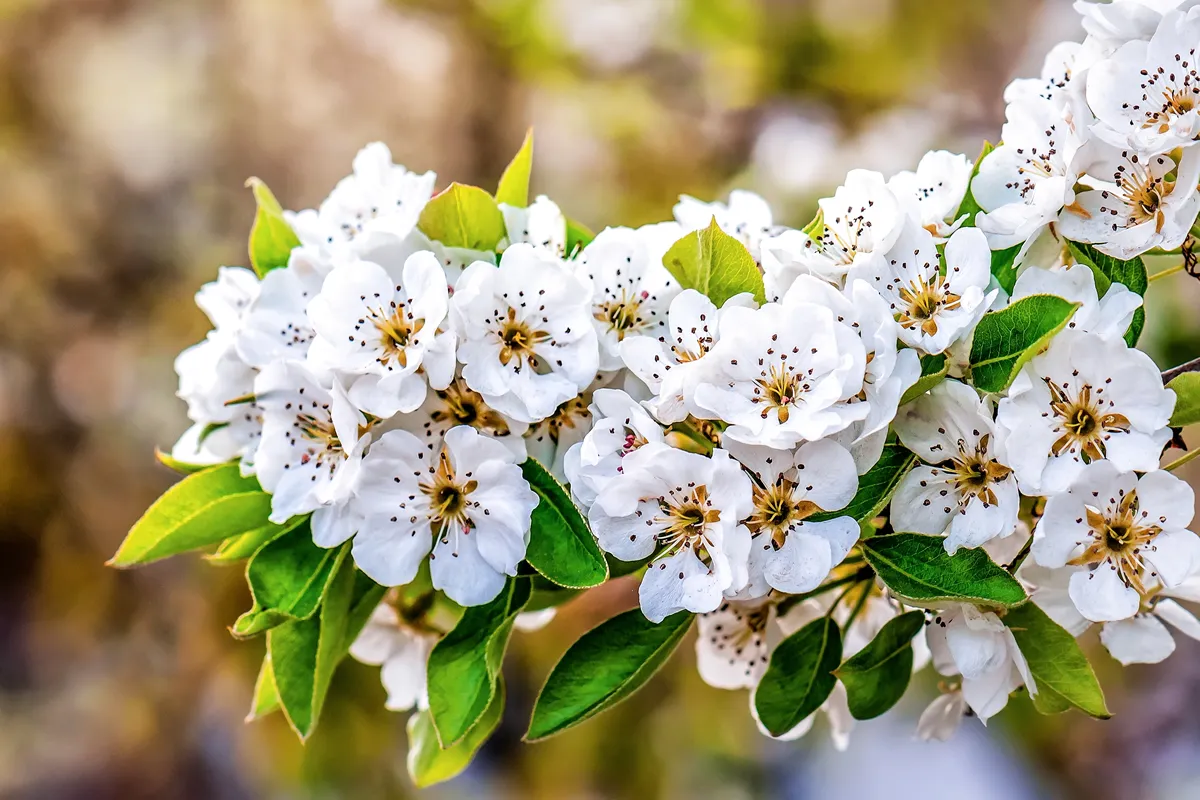
Pear trees are a beautiful addition to any garden or orchard, but if left to their own devices, they can quickly grow out of control. This is where pruning comes in. Pruning is the act of trimming away certain parts of the tree in order to encourage healthy growth and prevent disease. In pear trees, pruning is particularly important for a few reasons. First, it allows the tree to focus its energy on producing high-quality fruit, rather than on growing a lot of unnecessary branches. Additionally, pruning can help to prevent the spread of diseases like Fire Blight, which can quickly devastate an entire orchard if left unchecked. So if you want your pear tree to thrive, make sure to give it a little love and attention through regular pruning!
When is the Best Time to Prune a Pear Tree?

Pruning a pear tree may seem like a daunting task, but with a little know-how, it's actually quite simple. The key to successful pruning is timing. The best time to prune your pear tree is during the dormant season, which is typically from late winter to early spring. Pruning during this period has many benefits: it promotes healthy growth and increased fruit production, removes damaged, diseased, or dead wood, and shapes the tree for optimal light and air penetration. So, grab your pruning tools and head out to your pear tree this season - your efforts will be rewarded with a bountiful harvest come summer!
A Step by Step Guide on How to Prune a Pear Tree
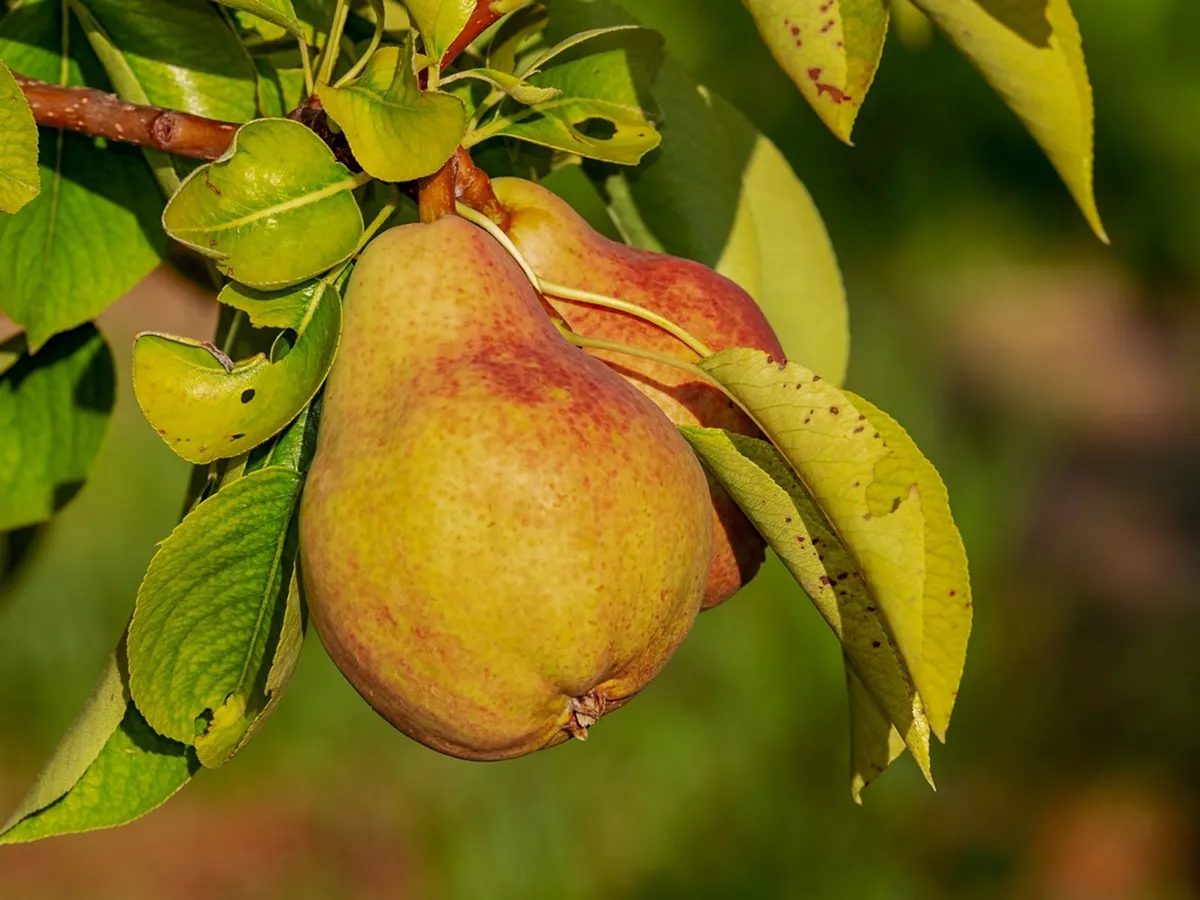
Pruning a pear tree may seem daunting, but with a little bit of guidance and patience, it can be a satisfying and beneficial experience. The first step in pruning is to understand the structure of your tree and identify which branches need to be removed. It's important to start by removing any dead, diseased or damaged branches as they may be impacting the overall health of the tree. Next, focus on thinning out the amount of growth in the canopy to encourage air and sunlight to reach all parts of the tree. Remember to make clean, angled cuts and to not remove more than a quarter of the tree's growth in one season. With time, practice, and a little bit of care, you can keep your pear tree looking healthy and fruitful for years to come.
Pruning a pear tree is essential for its health, productivity, and overall appearance. Here's a step-by-step guide to help you do it correctly:
- Step 1: Choose the Right Time The best time to prune a pear tree is in late winter or early spring before new growth starts but when the tree is still dormant. This minimizes stress and allows wounds to heal quickly.
- Step 2: Gather Your Tools You'll need a pair of sharp pruning shears for small branches, loppers for larger branches, and possibly a pruning saw for very large limbs. Make sure your tools are clean and sharp.
- Step 3: Start with Dead, Diseased, or Damaged Wood Look for any branches that are dead, diseased, or damaged. These should be removed first. Cut them back to the nearest healthy wood or the trunk.
- Step 4: Remove Suckers and Water Sprouts Suckers grow from the base of the tree, and water sprouts grow straight up from the branches. Both can drain energy from the tree and should be removed.
- Step 5: Thin Out the Crown Remove any branches that are crossing or rubbing against each other, as well as those growing inward toward the center of the tree. The goal is to open up the crown of the tree to allow better air circulation and light penetration.
- Step 6: Shorten Long Branches Cut back long, leggy branches to a side branch or bud that is facing the direction you want the new growth to go. This helps control the size of the tree and encourages bushier growth.
- Step 7: Make Clean Cuts When pruning, make clean, angled cuts just above a bud or branch. Don't leave stubs, as they can invite disease.
- Step 8: Clean Up After pruning, clean up and dispose of the cut branches. If any were diseased, avoid composting them to prevent spreading the disease.
- Step 9: Care for Your Tree After pruning, give your tree some extra care by watering it well and applying a balanced fertilizer.
Remember, pruning should be done conservatively. A good rule of thumb is to never remove more than 25% of the tree's canopy in a single year. It's better to under-prune than over-prune.
How Much can I Prune Away from a Mature Pear Tree
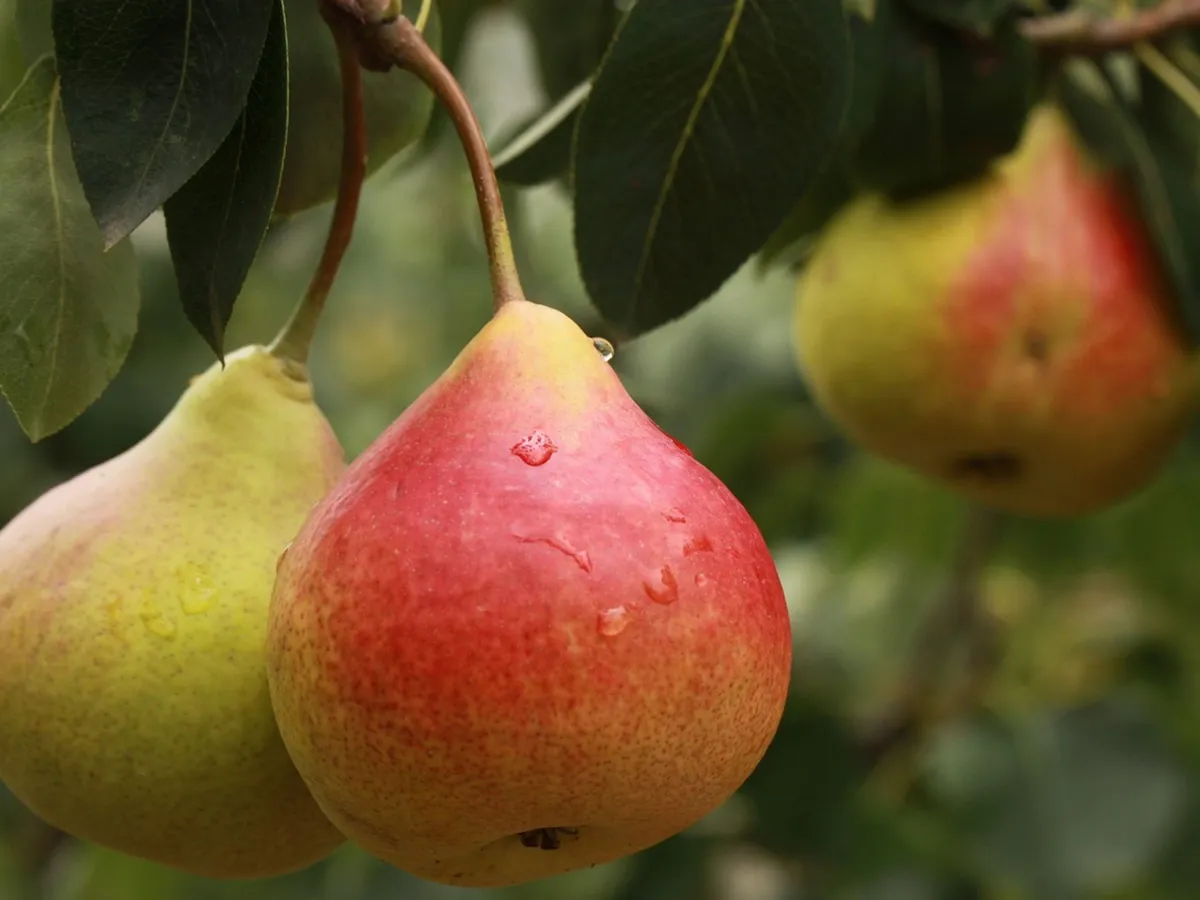
Pruning a mature pear tree can be an intimidating task, especially if you're worried about over-pruning and damaging the tree. The good news is, with a little knowledge and care, you can safely prune away a significant amount of growth without harming your pear tree. It's important to remember that pear trees have a natural shape and structure, and your goal when pruning should be to enhance that natural form. A general rule of thumb is to never remove more than a third of the tree's growth in one season to avoid negatively impacting its overall health and productivity. With patience and a steady hand, you can give your mature pear tree the TLC it needs to thrive for years to come.
How to Care for a Pear Tree after Pruning
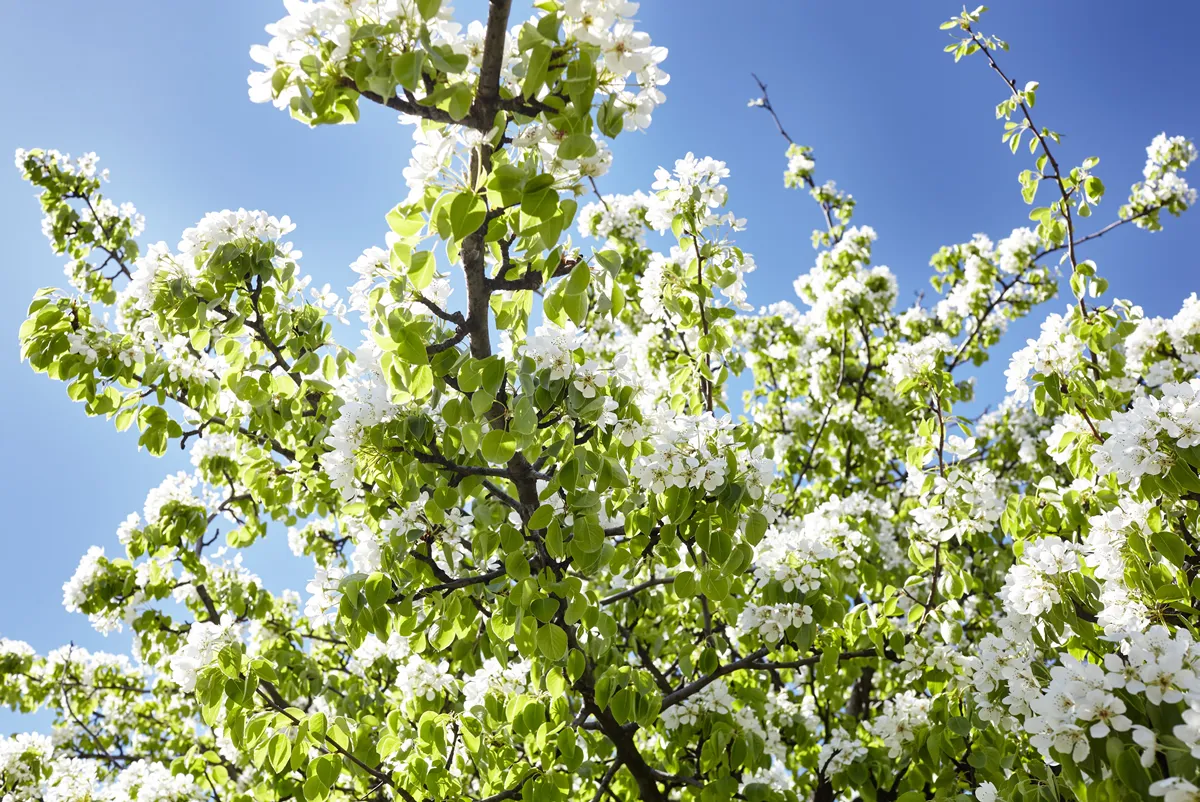
Pruning a pear tree can be a daunting task, but the hard work pays off when the tree bursts back to life with new growth and fresh fruit. After the pruning is done, however, the care shouldn't stop there. In order to ensure a successful harvest, proper post-pruning care is necessary. This includes regularly watering the tree, providing adequate sunlight and shade, and fertilizing in the spring. It's also important to monitor for any signs of disease or pests, and to take action immediately if any issues arise. With some TLC, your newly pruned pear tree will thrive and provide you with a bountiful harvest season after season.
Caring for a pear tree after pruning involves several steps to ensure the tree recovers well and continues to grow healthily. Here's what you need to do:
- 1. Watering: After pruning, water the tree deeply. This helps the tree recover from the stress of pruning and promotes healthy growth. However, be careful not to overwater, as this can lead to Root Rot.
- 2. Mulching: Apply a layer of mulch around the base of the tree. This helps retain soil moisture, suppresses weeds, and adds nutrients to the soil as it decomposes. Ensure the mulch is not touching the trunk of the tree to prevent rot.
- 3. Monitoring: Keep an eye on the tree for any signs of disease or pest activity, particularly in the areas where cuts were made. If you notice anything unusual, such as oozing sap, discoloration, or insect activity, take action immediately.
- 4. Fertilizing: About a month after pruning, apply a balanced fertilizer to give the tree a nutrient boost. This is especially important if your soil is poor. Follow the manufacturer's instructions for application rates.
- 5. Protecting: If you pruned a lot, the tree might be more susceptible to sunburn. Consider using a tree wrap or painting the trunk with white latex paint to reflect sunlight and prevent sunburn.
- 6. Follow-up Pruning: Sometimes, pruning can stimulate excessive new growth that is weakly attached. Monitor the tree and perform follow-up pruning if necessary to remove this growth and maintain the tree's shape.
Remember, every tree is unique and may require different care. Always monitor your tree closely and adjust your care practices as necessary.
How to avoid Pruning too Much off my Pear Tree
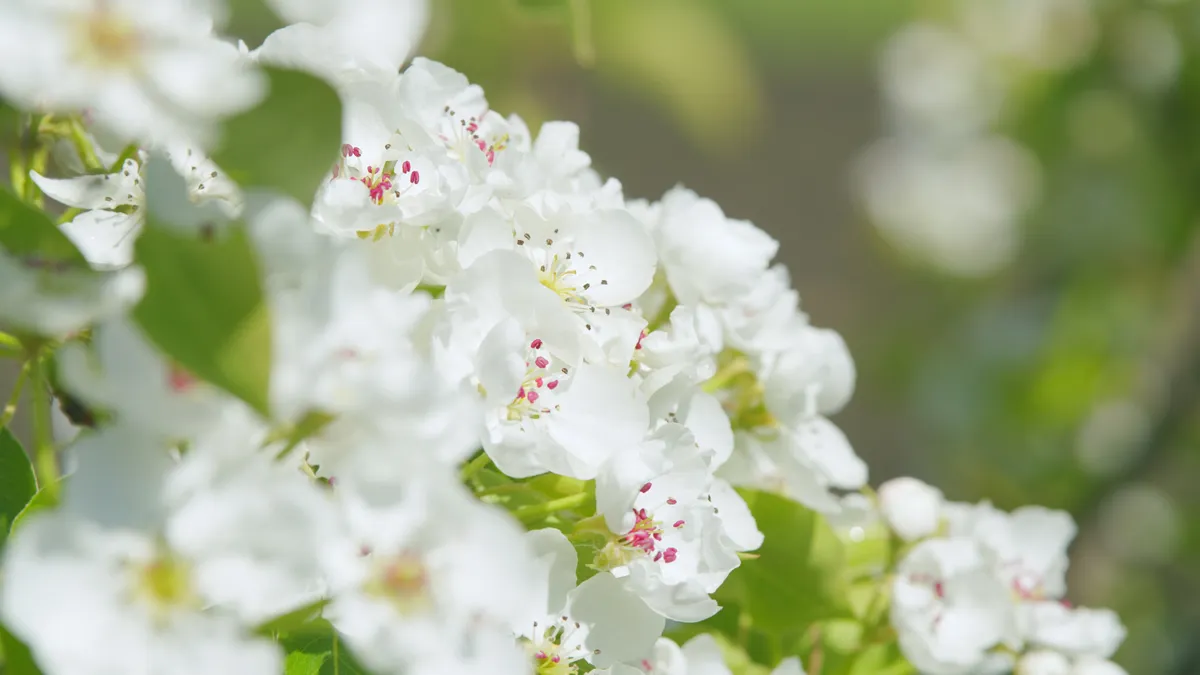
As a gardener, you might be concerned about pruning your pear tree and taking off too much, which could harm the tree's future growth and fruit production. The good news is that with the right knowledge and techniques, you can successfully avoid pruning too much. One key tip is to keep an eye on the pear tree's growth and only prune branches that are damaged or growing in the wrong direction. It's also recommended to prune in the late winter or early spring before the tree starts to grow. Ultimately, taking care in the pruning process will help your pear tree flourish and produce luscious fruit for years to come.
What to Do if my Pear Tree stops Producing Fruit
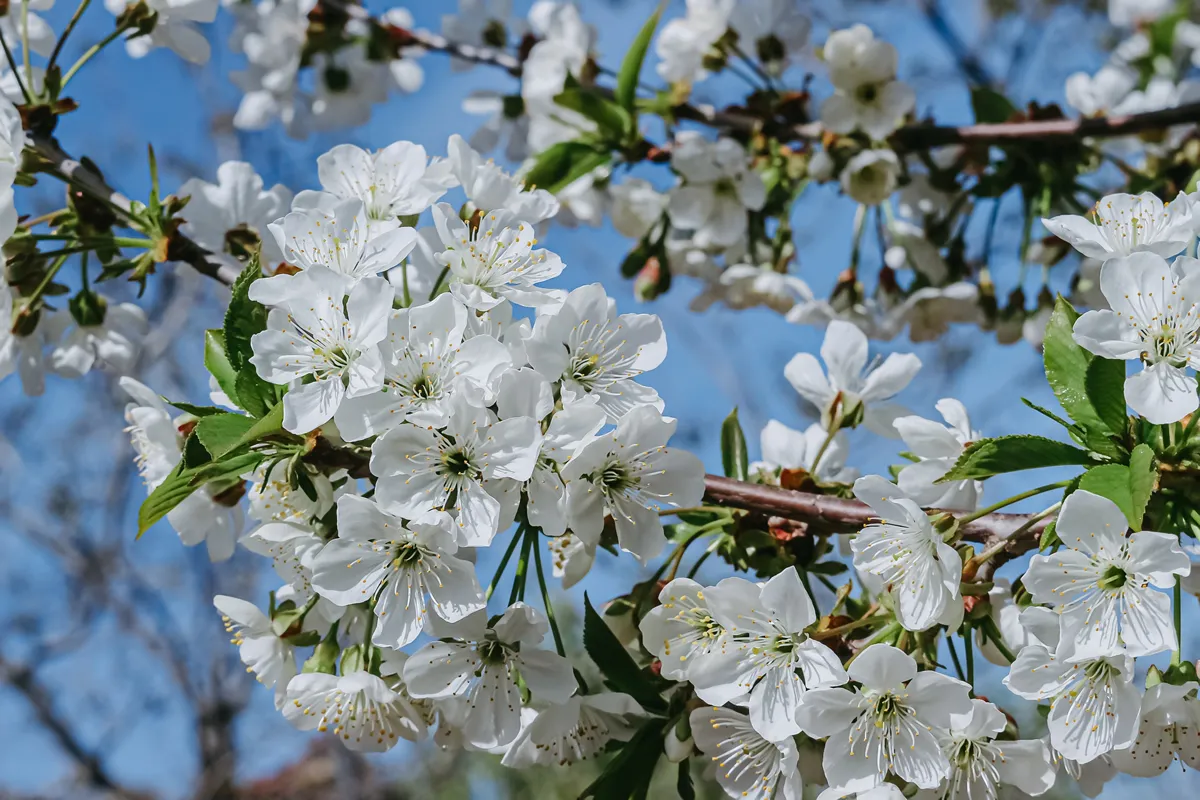
A pear tree is a great addition to any garden or yard for its beautiful foliage and delicious fruit. However, sometimes pear trees can stop producing fruit, causing frustration and disappointment. But don't worry, there are some things you can do to help your pear tree start producing again.
Firstly, make sure the tree is getting enough sunlight and water. Also, prune any dead or diseased branches to encourage new growth.
Additionally, you can try fertilizing the soil around the tree with a fruit tree fertilizer. With some patience and care, your pear tree will hopefully start producing fruit again in no time!
An Overview of Pruning a Pear Tree
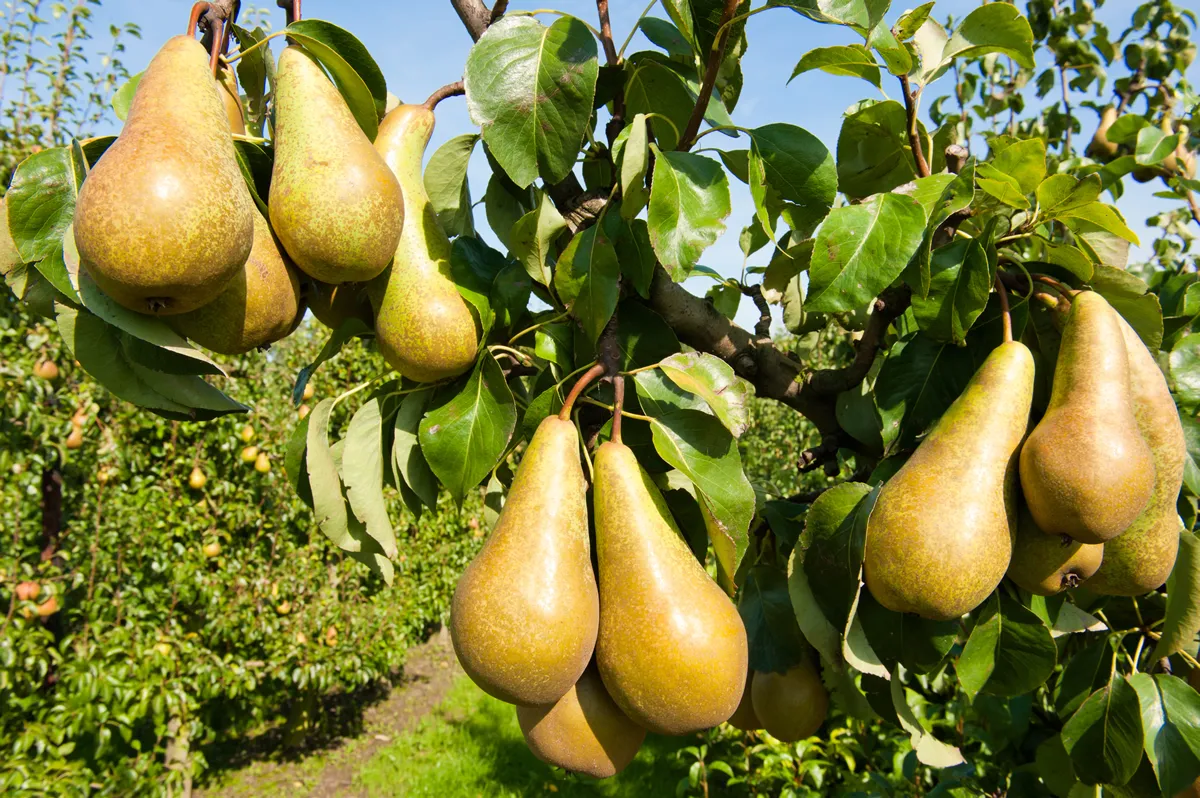
Pruning a pear tree can seem like a daunting task, but rest assured, it's easier than it looks. The goal is to create a strong structure that allows air and sunlight to reach all parts of the tree, promoting healthy growth and an abundance of juicy, delicious pears. As a general rule, pruning should be done in the late winter or early spring when the tree is dormant. Start by removing any dead, diseased, or crossing branches. Then, thin out any crowded areas, leaving space for new growth. Finally, trim back any excessively long branches to maintain a desirable shape. With a little patience and practice, you'll have a flourishing pear tree in no time!
In conclusion, while pruning a pear tree can seem daunting, the many benefits of regular maintenance far outweigh the concerns. Not only is proper pruning essential for producing fruit and maintaining an attractive, healthy-looking tree, but it also aids in plant safety by keeping limbs from interference with utility wires and buildings. For those of us located in the UK, there are particular steps that should be taken in order to ensure a successful prune such as timing, appropriate tools and techniques. However, each region has its own unique conditions and some best practices may vary, so it’s always best to consult with a local expert for advice about pruning effectively in your area. Taking care of your pear tree from planting to harvest will result in deliciously juicy pears for many years to come!
How to Prune Climbing Vines
List by Variety
- How to Prune Actinidia
- How to Prune Akebia
- How to Prune Bougainvillea
- How to Prune Campsis
- How to Prune Celastrus
- How to Prune Chilean Glory Vine
- How to Prune Clematis Armandii
- How to Prune Clematis Montana
- How to Prune Climbing Rose
- How to Prune Hedera GoldHeart
- How to Prune Honeysuckle
- How to Prune Hydrangea Petiolaris
- How to Prune Ivy
- How to Prune Japanese Wisteria
- How to Prune Morning Glory
- How to Prune Parthenocissus
- How to Prune Persian Ivy Hedera Colchica
- How to Prune Schisandra
- How to Prune Star Jasmine
- How to Prune Sweet Peas
- How to Prune True Jasmine
- How to Prune Virginia Creeper
- How to Prune Wisteria
How to Prune Hedges
List by Variety
- How to Prune an Arborvitae Hedge
- How to Prune a Barberry Hedge
- How to Prune a Beech Hedge
- How to Prune a Boxwood Hedge
- How to Prune a Butterfly Bush Hedge
- How to Prune a Cotoneaster Hedge
- How to Prune an English Lavender Hedge
- How to Prune an Escallonia Hedge
- How to Prune an Euonymus-Hedge
- How to Prune a Firethorn Hedge
- How to Prune a Forsythia Hedge
- How to Prune a Griselinia Hedge
- How to Prune a Hawthorn Hedge
- How to Prune a Holly Hedge
- How to Prune a Hornbeam Hedge
- How to Prune a Laurel Hedge
- How to Prune a Leylandii Hedge
- How to Prune a Lilac Hedge
- How to Prune a Maple Leaf Viburnum Hedge
- How to Prune a Photinia Hedge
- How to Prune a Pink Ramanus Rose Hedge
- How to Prune a Privet Hedge
- How to Prune a Pyracantha Hedge
- How to Prune a Spirea Hedge
- How to Prune a Thuja Hedge
- How to Prune a Viburnum Hedge
- How to Prune a Western Red Cedar Hedge
- How to Prune a Yew Hedge
How to Prune Shrubs
List by Variety
- How to Prune an Abelia Shrub
- How to Prune an Abutilon
- How to Prune an Acer / Japanese-Maple
- How to Prune an Amelanchiers
- How to Prune an Apple-Tree
- How to Prune an Arbovitae Shrub
- How to Prune an Arbutus
- How to Prune an Aucuba
- How to Prune a Azalea Mollis
- How to Prune Azaleas
- How to Prune a Bay Tree Shrub
- How to Prune a Berberis Darwinii
- How to Prune Berberis Deciduous Types
- How to Prune a Boxwood Shrubs
- How to Prune a Brachyglottis Senecio
- How to Prune a Buddleia Alternifolia
- How to Prune Buddleias Butterfly Bushes
- How to Prune a Buddleja Globosa
- How to Prune a Callicarpa
- How to Prune a Camellia
- How to Prune a Caryopteris
- How to Prune a Catalpa Bignonioides Aurea
- How to Prune Ceanothus Deciduous Types
- How to Prune Ceanothus Evergreen Types
- How to Prune a Ceratostigma
- How to Prune a Chaenomeles
- How to Prune a Choisya
- How to Prune a Cistus
- How to Prune a Clematis
- How to Prune a Cornus
- How to Prune a Cotinus Royal Purple
- How to Prune a Cytisus Scoparius
- How to Prune a Exochorda x Macrantha
- How to Prune a Forsythia
- How to Prune a Hebe
- How to Prune a Hydrangeas
- How to Prune Juniper Shrubs
- How to Prune a Lavatera
- How to Prune Lilac Bushes
- How to Prune a Mugo Pine
- How to Prune Rose Bushes
- How to Prune Spirea Shrubs
- How to Prune Viburnum Shrubs
- How to Prune a Weigela
- How to Prune a Yew
How to Prune Trees
List by Variety
- How to Prune a Apple Tree
- How to Prune a Apricot Tree
- How to Prune a Ash Tree
- How to Prune a Birch Tree
- How to Prune a Cherry Tree
- How to Prune a Elm Tree
- How to Prune a Fig Tree
- How to Prune a Grape Tree
- How to Prune a Hickory Tree
- How to Prune a Maple Tree
- How to Prune a Oak Tree
- How to Prune an Olive Tree
- How to Prune a Peach Tree
- How to Prune a Pear Tree
- How to Prune a Plum Tree
- How to Prune a Poplar Tree
- How to Prune a Walnut Tree
Pests and Diseases
- How to Protect from Anthracnose
- How to Protect from Athids
- How to Protect from Apple Scab
- How to Protect from Armillaria Root Rot
- How to Protect from Bagworms
- How to Protect from Black Knot
- How to Protect from Black Rot
- How to Protect from Black Spot
- How to Protect from Botryosphaeria Dieback
- How to Protect from Botrytis Blight
- How to Protect from Brown Rot
- How to Protect from Canker Diseases
- How to Protect from Caterpillars
- How to Protect from Cedar Apple Rust
- How to Protect from Clematis Wilt
- How to Protect from Codling Moths
- How to Protect from Crown Gall
- How to Protect from Crown Rot
- How to Protect from Downy Mildew
- How to Protect from Dutch Elm Disease
- How to Protect from Elm Bark Beetle
- How to Protect from Elm Leaf Beetle
- How to Protect from Fire Blight
- How to Protect from the Gypsy Moth Caterpillars
- How to Protect from Honey Fungus
- How to Protect from Japanese Beetles
- How to Protect from Juniper Scale
- How to Protect from Lace Bugs
- How to Protect from Lacewings
- How to Protect from Leaf Miners
- How to Protect from Leaf Spot Diseases
- How to Protect from Mealybugs
- How to Protect from Needle Blight
- How to Protect from Oak Borers
- How to Protect from Oak Wilt
- How to Protect from Olive Knot Disease
- How to Protect from Peach Leaf Curl
- How to Protect from Peach Scab
- How to Protect from Pear Psylla
- How to Protect from Pear Rust
- How to Protect from Pear Scab
- How to Protect from Perennial Canker
- How to Protect from Pine Sawflies
- How to Protect from Pine Shoot Beetle
- How to Protect from Plum Fruit Moth
- How to Protect from Plum Pox Virus
- How to Protect from Poplar Borer
- How to Protect from Powdery Mildew
- How to Protect from Root Rot
- How to Protect from Rose Rosette Disease
- How to Protect from Rust Fungi
- How to Protect from Scale Insects
- How to Protect from Silver Leaf Disease
- How to Protect from Slugs
- How to Protect from Spider Mites
- How to Protect from Twig Blight
- How to Protect from Verticillium Wilt
- How to Protect from Viburnum Beetle
- How to Protect from Vine Weevil
- How to Protect from Walnut Blight
- How to Protect from Walnut Husk Fly
- How to Protect from Walnut Scale
- How to Protect from Western Flower Thrips
- How to Protect from Whiteflies
Popular Pruning Sections

General Pruning
General Information on How to Prune your Garden
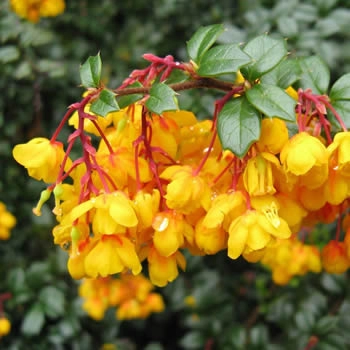
Pruning Shrubs
The Most Read Shrubs to Prune
- How to Prune Hydrangeas
- How to Prune a Rose Bush
- How to Prune Azaleas
- How to Prune a Lilac Bush
- How to Prune Buddleias - Butterfly Bushes
- How to Prune Forsythia
- How to Prune Weigela
- How to Prune Hebe
- How to Prune Camellia

Pruning Trees and Climbers
The Most Read Trees to Prune
- How to Prune Apple Trees
- Pruning Plum Trees
- Pruning Cherry Trees
- Pruning Olive Trees
- How to Prune a Grape Vine
- Acer Pruning | Pruning Japanese Maple
- How to Prune a Fig Tree
- Pruning Peach Trees
- Pruning Pear Trees
- How to Prune a Plum Tree

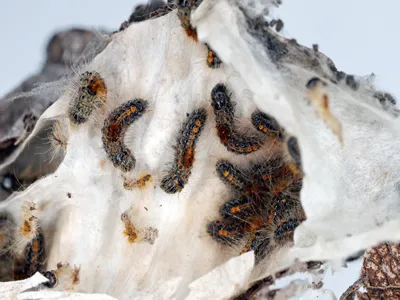 Brown tail caterpillars on a branch of a pear tree
Brown tail caterpillars on a branch of a pear tree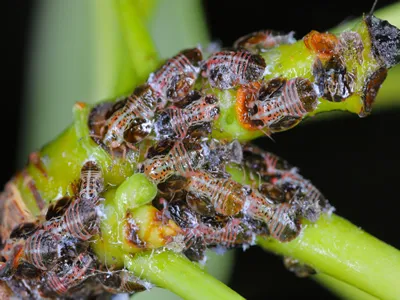 Cacopsylla pyri larvae on a pear tree
Cacopsylla pyri larvae on a pear tree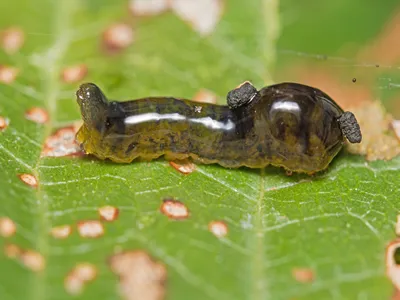 A Pear slug is the larva of the sawfly Caliroa cerasi
A Pear slug is the larva of the sawfly Caliroa cerasi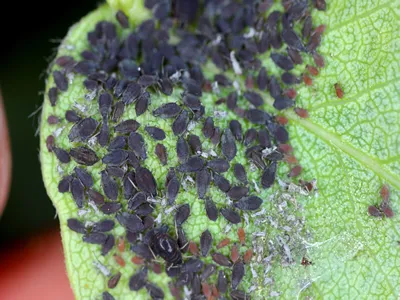 Pear grass aphid
Pear grass aphid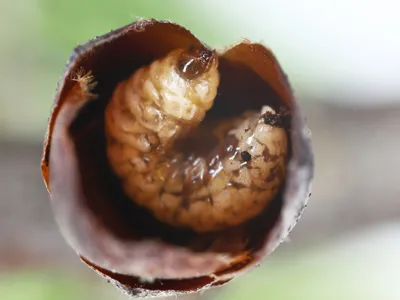 Pear weevil or pear blossom weevil (Anthonomus piri).
Pear weevil or pear blossom weevil (Anthonomus piri).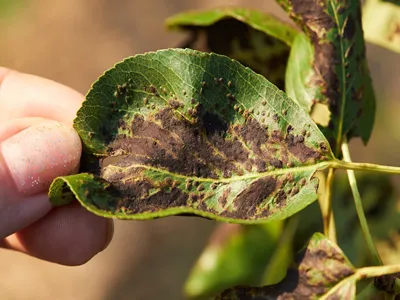 A pear leaf with blister mite or Eriophyes pyri
A pear leaf with blister mite or Eriophyes pyri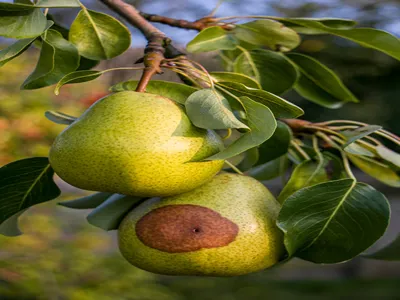 Pear moniliosis. Pears rot on a tree
Pear moniliosis. Pears rot on a tree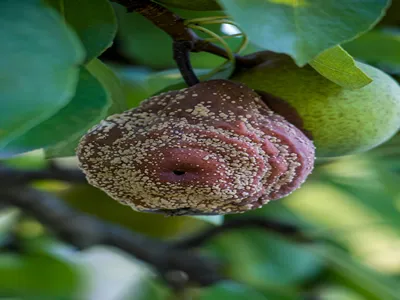 Pear moniliosis. Pears rot on a tree
Pear moniliosis. Pears rot on a tree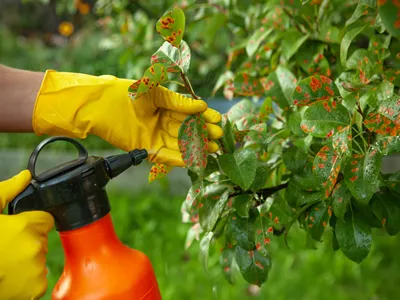 Pear leaves in red dot.
Pear leaves in red dot. Black spot of pear, scab of pear a fungal disease
Black spot of pear, scab of pear a fungal disease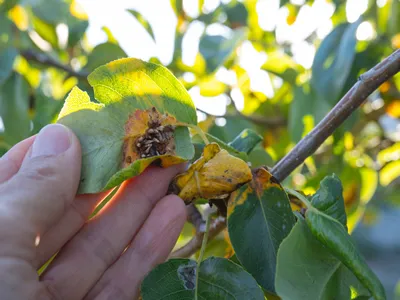 Pear leaf infected with gymnosporangium sabinae rust and Septoria Leaf Spot
Pear leaf infected with gymnosporangium sabinae rust and Septoria Leaf Spot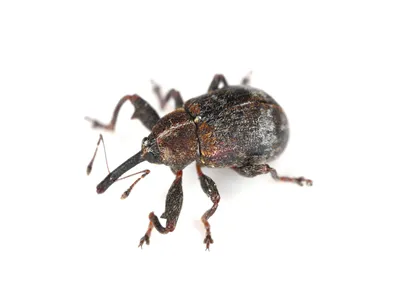 The pear blossom weevil (Anthonomus piri)
The pear blossom weevil (Anthonomus piri)